Featured image courtesy Camille Vidal.
A movement started across the pond is reshaping the relationship people have with alcohol, and starting new conversations about the topic.
When Laura Willoughby sought to change her relationship with alcohol, she found that there weren’t many options to turn to in the United Kingdom that suited her well. So she created her own. What started out as a Facebook group grew into what is now a movement that swept across the UK and eventually parts of the globe. Club Soda, the mindful drinking community Willoughby co-founded, was just the start of a conversation about how people can drink mindfully.
Camille Vidal, founder of La Maison Wellness, describes what a mindful drinker is best. For her, there are many different types of mindful drinkers, but there is not just one label. “Often, because the movement is expanding and there are more and more people becoming vocal about their sobriety, about cutting alcohol out of their life, very often people assume that if you are a mindful drinker, it means that you’re sober,” Vidal says. “But actually, mindful drinking, and being a mindful drinker, is being mindful, being aware, being conscious of how much, how often and what you drink.
For Willoughby, she identifies as being alcohol-free, and has been for eight and a half years. Club Soda was born from Willoughby’s realization that seeking a change in a relationship with alcohol was met with the disease model of addiction, which may help some people, but not all. “Alcohol is an identity, not a medical condition,” Willoughby says. “I’m alcohol-free because that suits me best and alcohol doesn’t have anything left for me; I definitely took everything that was possible from alcohol.”
Eventually the mindful drinking conversation began to shift to the beverage industry. According to Vidal, today there are about 90 different alcohol-free spirits available around the world, but one company was the catalyst for this category. “Five years ago there was one brand that launched the world’s first alcohol-free spirit — that’s called Seedlip.
Seedlip is a botanical spirit,” Vidal says. “And they really paved the way for rethinking how we drink.” Seedlip’s roots were planted in London in 2015 by the brand’s founder, Ben Branson. Starting with one spirit, the company grew to include three choices, each with an individual flavor profile. One interesting spirit Vidal notes is its Garden 108 spirit that is made with traditional herbs and its signature, peas, giving it a refreshing, gin-like flavor.
Vidal uses Seedlip and other brands — another one she recommends is a company called Lyres that is based in Australia — to create her mindful cocktails that she features on her company’s website. When the pandemic lockdown began in London, where she currently resides, she started “happy hours” on her social media where she showed people how to make her cocktails. Vidal also collaborates with companies and people, such as Willoughby, to spread the awareness of drinking mindfully.
Another category of alcohol-free spirits that has taken to the market are alternatives that are inspired to bring a new way of drinking and a new overall experience, explains Vidal. Three Spirit, another brand Vidal enjoys, specializes in spirits — they call elixirs — that are powered by plants. The elixirs not only taste good, but make the drinker feel good. “They’ve all been built to recreate the experience you have when you drink alcohol and the very reason why people drink alcohol,” explains Vidal. “For example, they have one that is called the Night Cap that helps you to relax, to ease stress, to calm you down, to help you with sleep — because it contains valerian, which helps with sleeping.”

Above: Camille Vidal; Below: Laura Willoughby
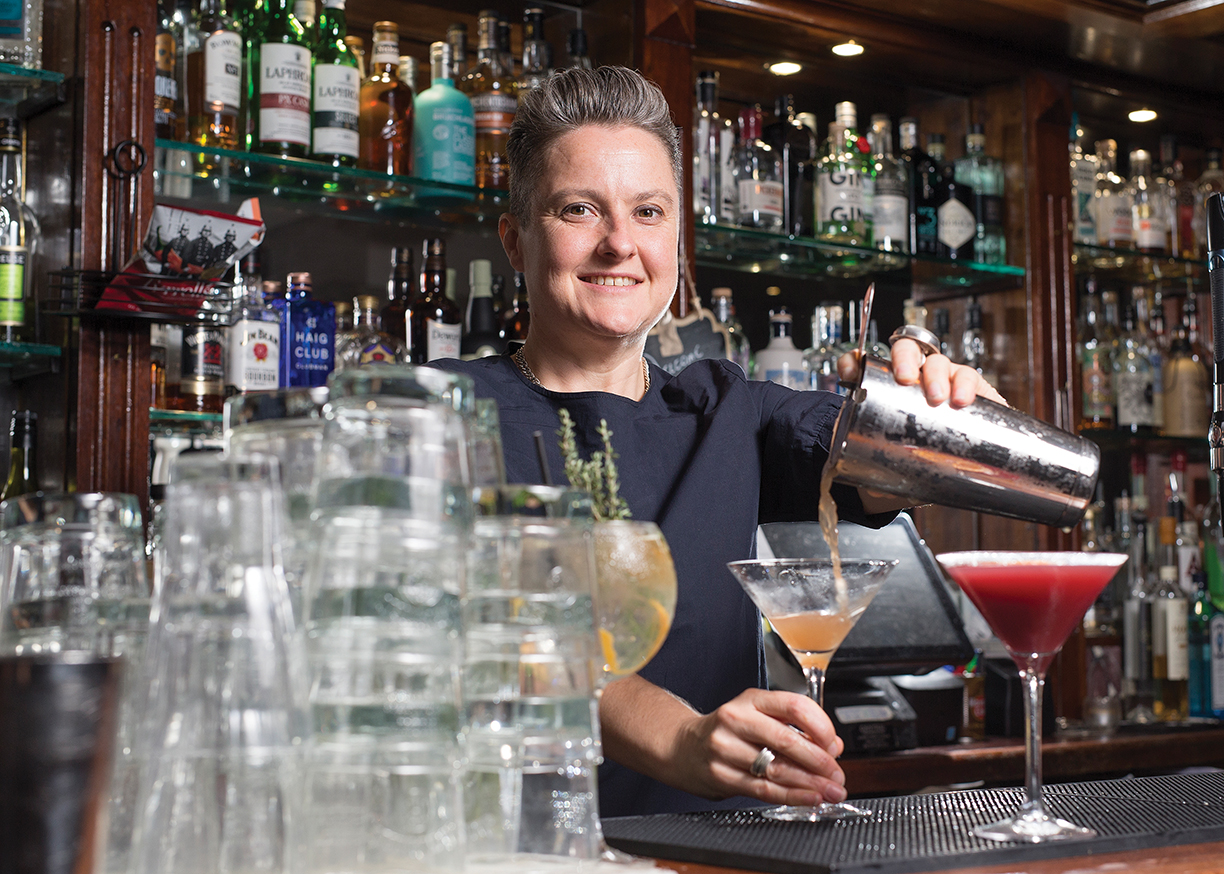
Willoughby herself enjoys drinking Three Spirit as one of her non-alcoholic options along with kombucha, which is something that Vidal says is a great addition to any non-alcoholic or low ABV cocktail. According to Vidal and Willoughby, choosing to become a mindful drinker doesn’t really have any setbacks, as it opens the door to a new lifestyle and way to enjoy nights out or time spent with good company. “People believe they have to give up their social life if they change their drinking, but what happens is your social life changes,” Willoughby says. “And guess what? Your social life changes anyway as you go through life.” On Club Soda’s website, the organization offers courses that help guide people down a mindful drinking journey that works for their lifestyle. “If somebody’s desire is to try and drink moderately,” says Willoughby. “Then that’s absolutely fine by us as well.” She goes on to say that there is a binary view of alcohol, which in actuality, there isn’t.”
Whether someone is choosing to phase alcohol out of their lives or is looking to start a new relationship with it, there are plenty of options that are just as delicious as their alcoholic counterparts. “I always say ‘tasty doesn’t have to be boozy,’” says Vidal. “For me, there’s something magical about having a low-alcoholic or non-alcoholic cocktail, and it’s not about the alcohol content, it’s about the moment, the celebration and appreciating the experience we’re having.”
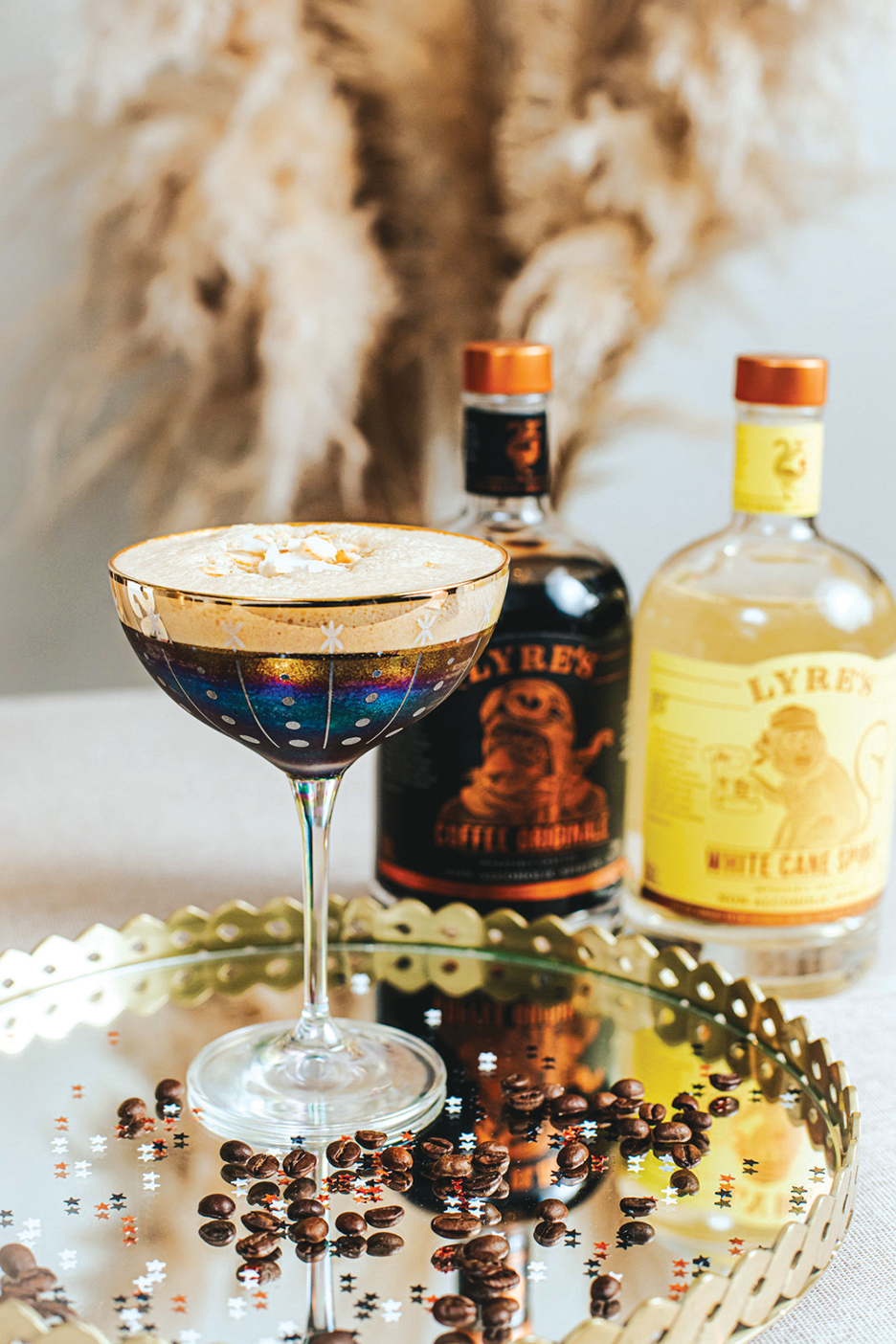
Café Soirée
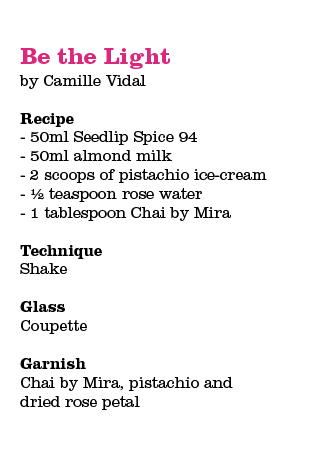
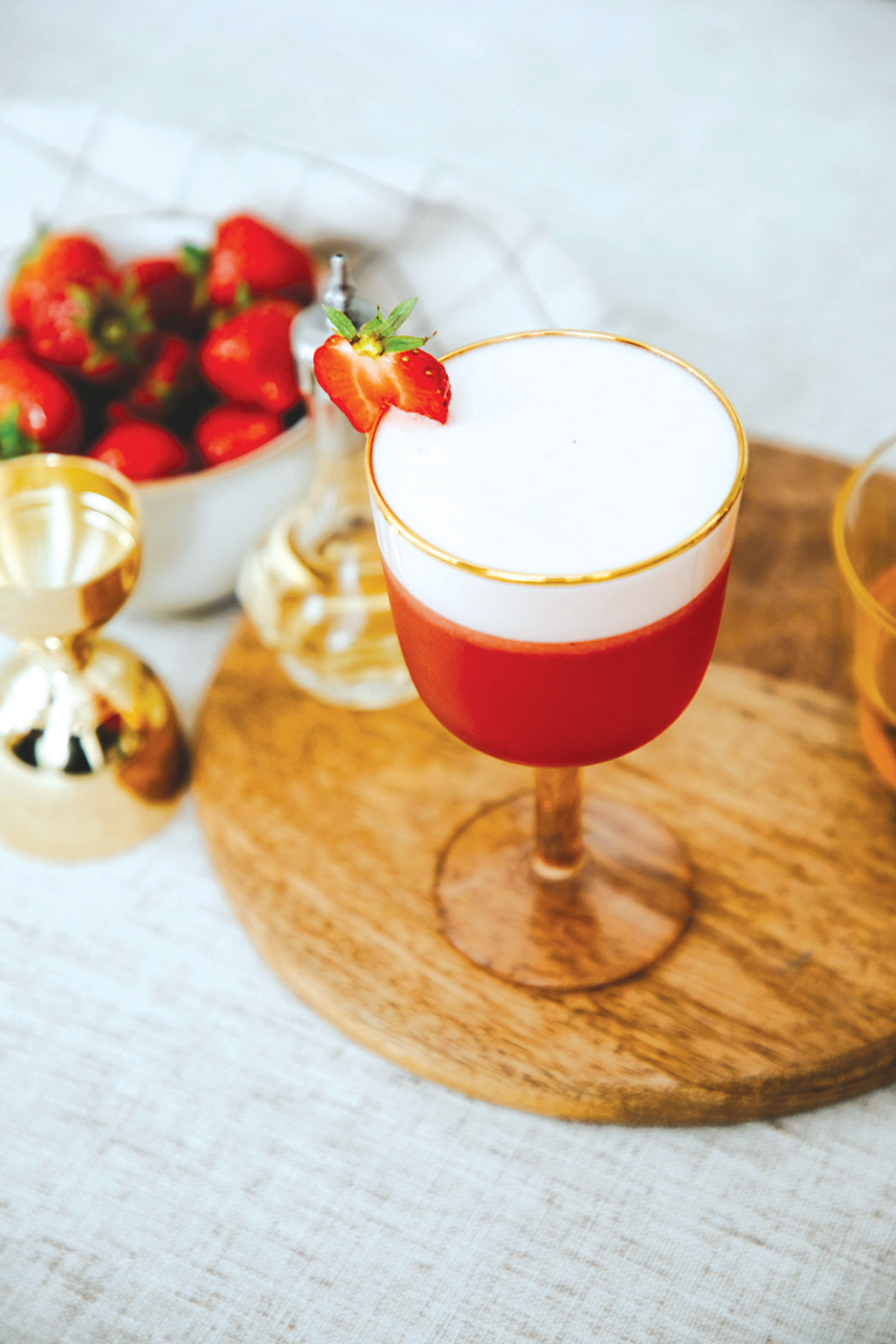
Strawberry Fields
In the United States and around the world, dining out is a common luxury. Getting to savor creative dishes, discovering new foods and enjoying the atmosphere of a restaurant all together make for a memorable time.
A downside to eating out: food waste. In the United States alone, about 11.4 million tons of food is wasted each year. That staggering number has opened the eyes of chefs and home cooks to practice zero-waste cooking.
This up-and-coming trend led three chefs in Helsinki, Finland to open up a restaurant dedicated to waste-free cooking. Restaurant Nolla, located in Helsinki’s Design District, combines Finnish cooking with the roots of the founders and chefs, Albert Franch Sunyer, Carlos Henriques, and Luka Balac.
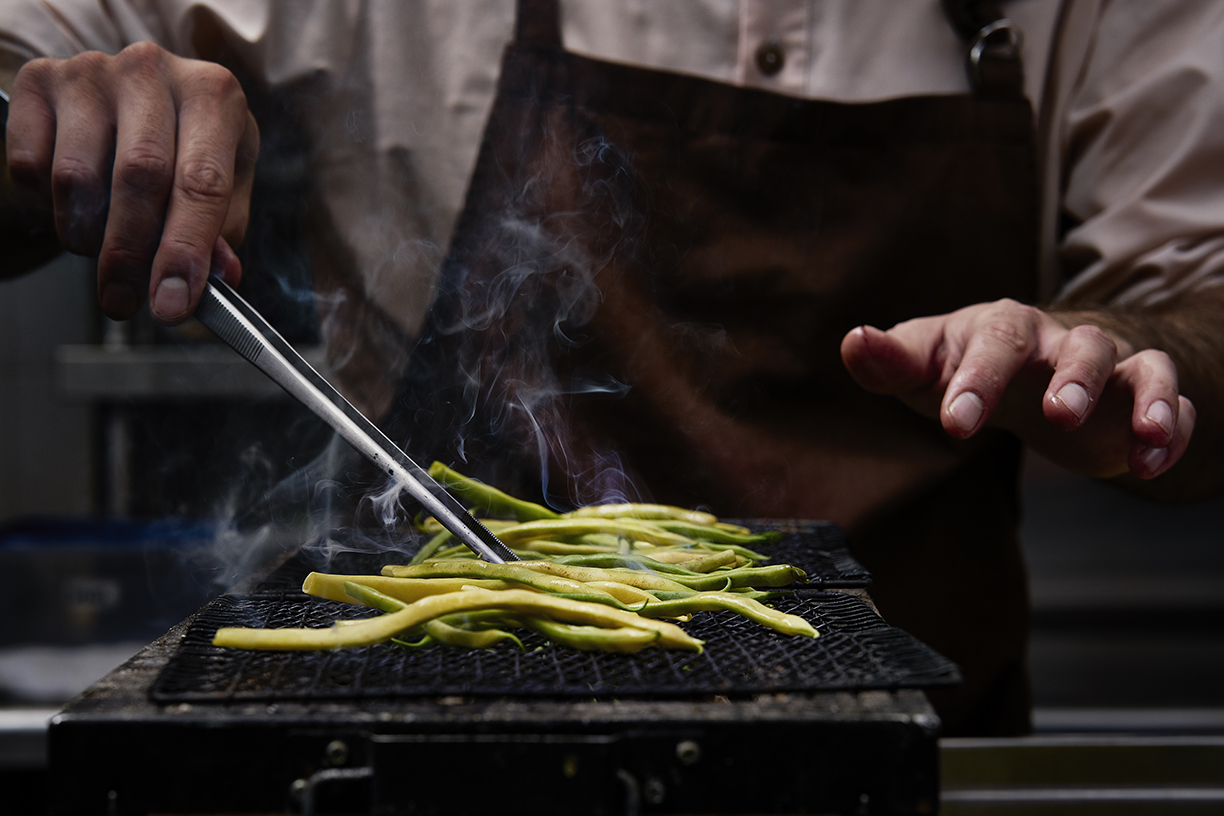
Restaurant Nolla prides itself on using fresh and well-kept ingredients.
Each dish created is carefully crafted to maximize every piece of each ingredient. Parts of an item that can’t be utilized are composted. Restaurant guests witness this process as the composter is located in the main dining area, showcasing what the restaurant is all about. Although utilized, the composter is not used as a garbage can. Before each item is tossed away, it is weighed and analyzed using a waste management software. Data is collected, what was thrown out, who threw it away and why, and is used to help improve the restaurants practices.
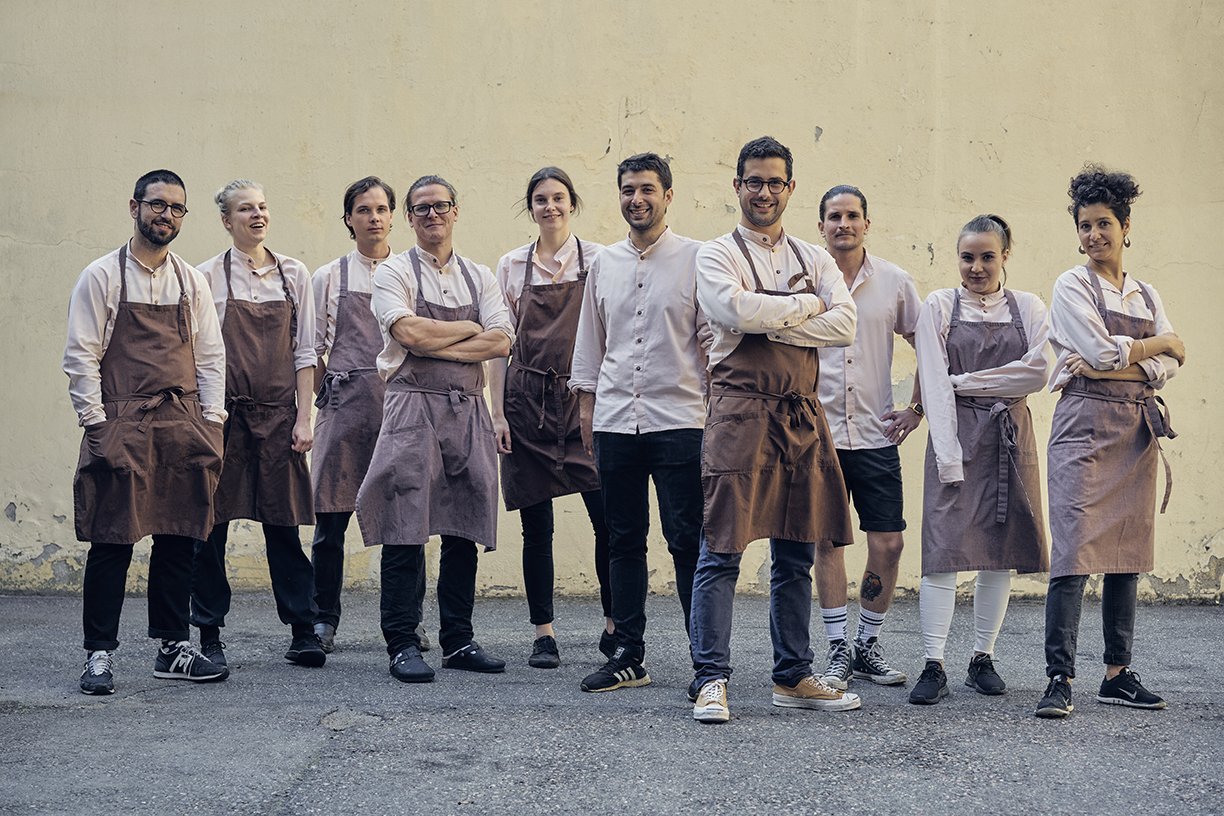
The Restaurant Nolla team.
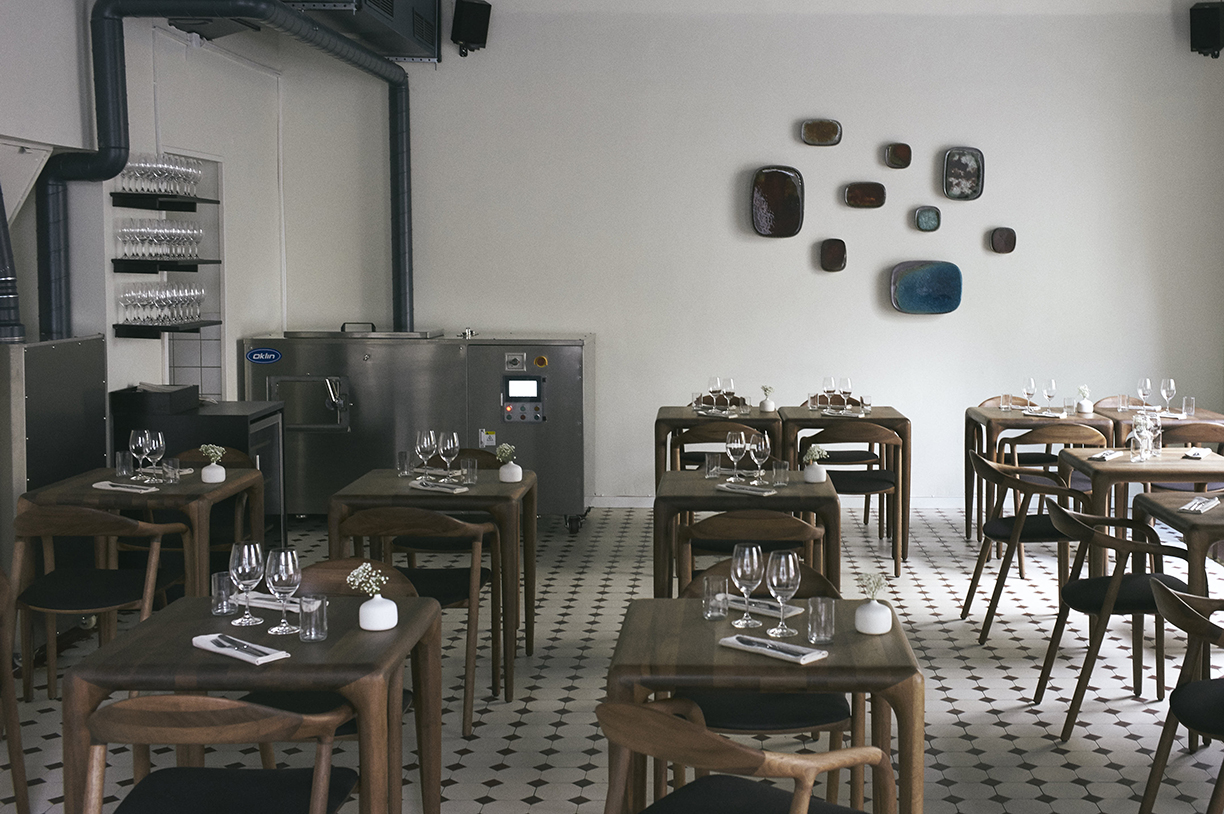
The composter sits in the dining room.
“Nolla is a restaurant without a trash bin. You cannot find any single use plastic here — no plastic packaging, no cling film, no vacuum bags, no foil,” says Sunyar, head chef of Restaurant Nolla, “Every detail from staff clothing and napkins to tableware has been thought of. Even the gift cards are made of compostable paper that has poppy seeds in them.”
Food is handled in a special way to ensure that Restaurant Nolla remains a waste-free establishment. From the way the food is delivered right down to how it’s stored, no part of the process was disregarded.
“We have created a box system for vegetables, fish and meat with local producers,” says Sunyar. “The boxes travel back and forth to prevent any packaging waste. We are very strict with this rule. If something comes in a non-reusable packaging, it is sent back to the supplier. No exceptions. This is the only way to make sure that people understand our beliefs and respect our practices.”
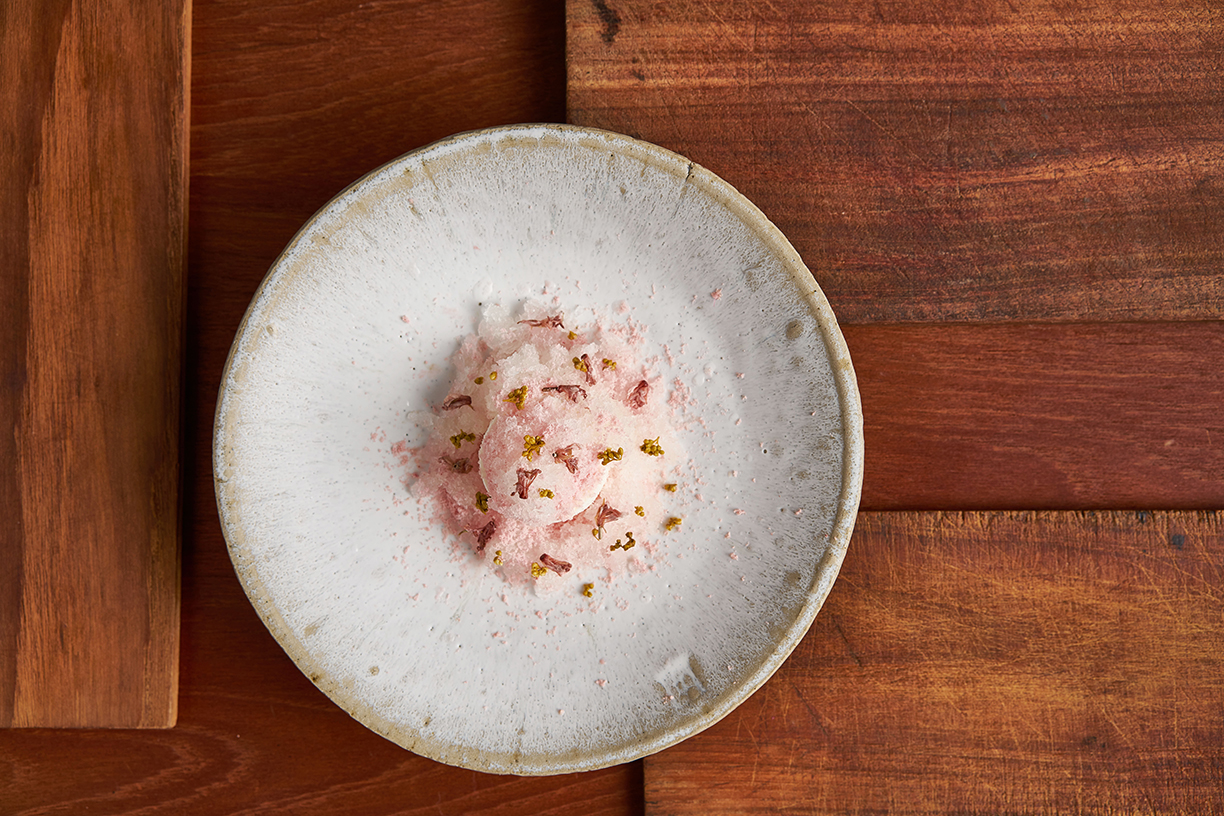
All parts of rhubarb.
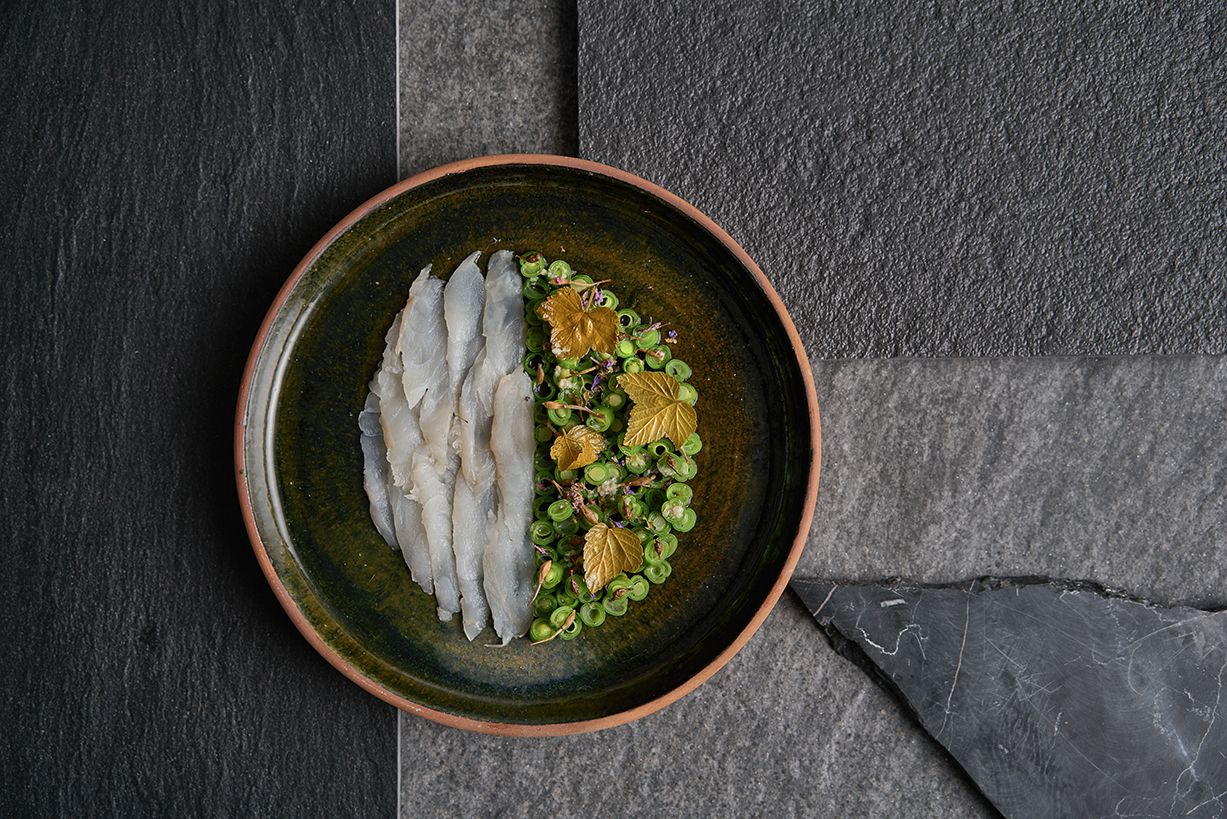
Beans and crudo.
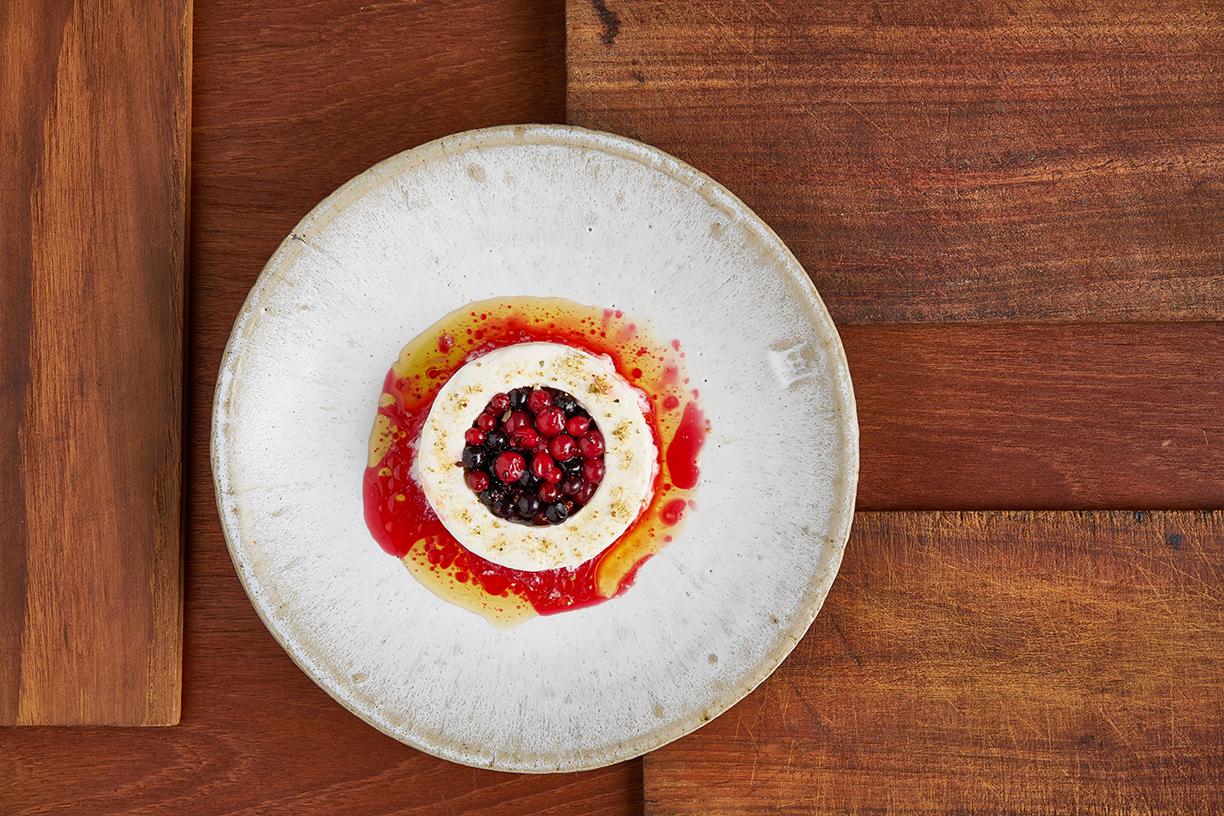
Ice cream, berries and honey.
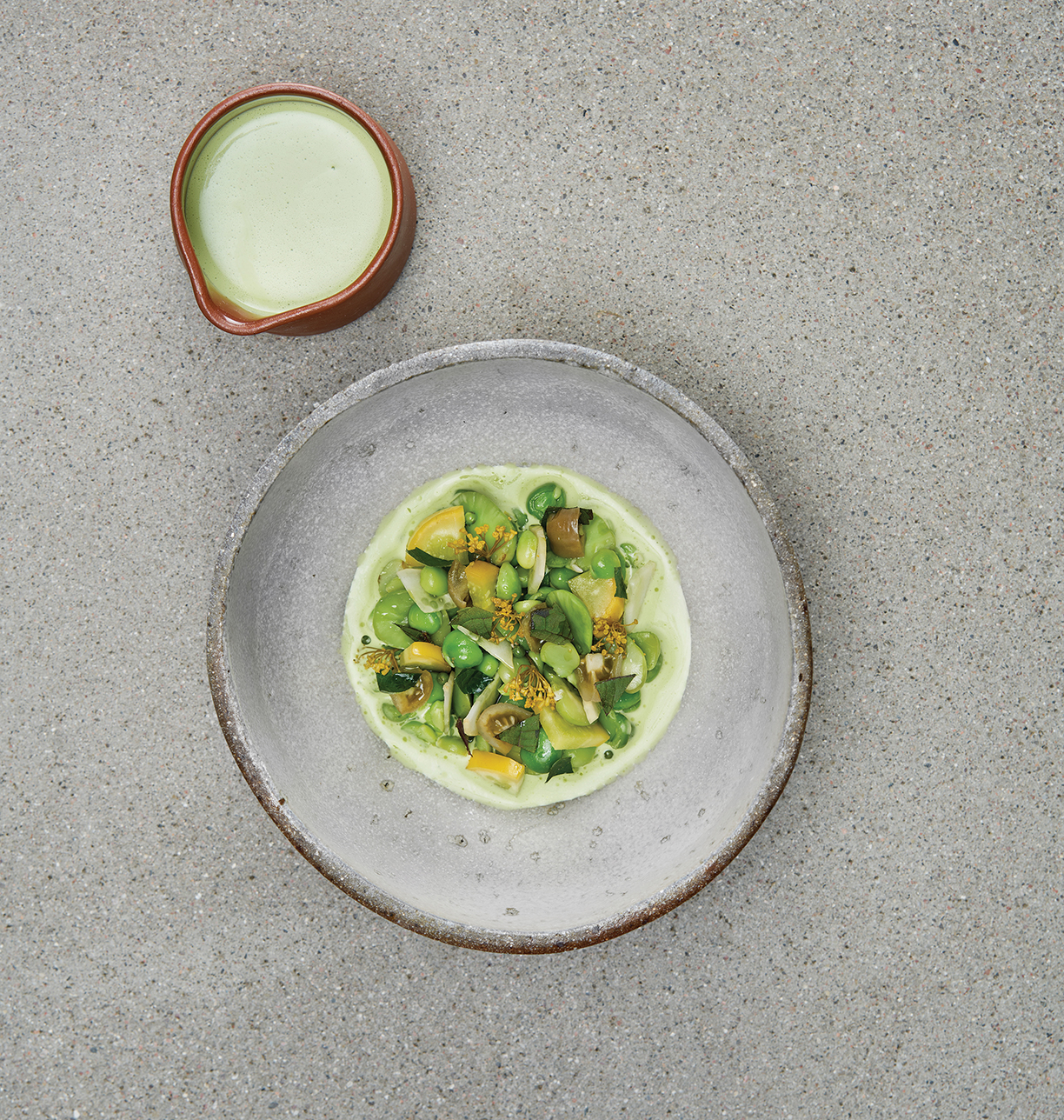
Sturgeon Pil Pil.
Food is fermented, pickled and dried to ensure ingredients are stored properly. The restaurant works with local producers who help them determine the best ingredients to use, based on what is growing during peak season.
“We use local and organic products,” says Sunyar. “The ingredients and their natural characteristics are the backbone of our tasting menus, and therefore, it is imperative that the quality of the produce is very high. These products tend to be more expensive in general, however, by using seasonal products and utilizing every part of them, our way of operating is very much cost effective.”
The chefs set out to show people that what they have accomplished is profitable and manageable. According to Sunyar, it’s not an easy process and creating the menu does take some time, but in the end he and the team stand by what they do, and they execute delicious and visibly beautiful dishes.
“It is a common misconception that waste-free practices mean cooking from products that expire soon or that making sustainable choices means that the quality deteriorates,” says Sunyar. “We do not cook from waste nor do we produce waste. We want to show that creative and great food can go hand in hand with sustainability.”
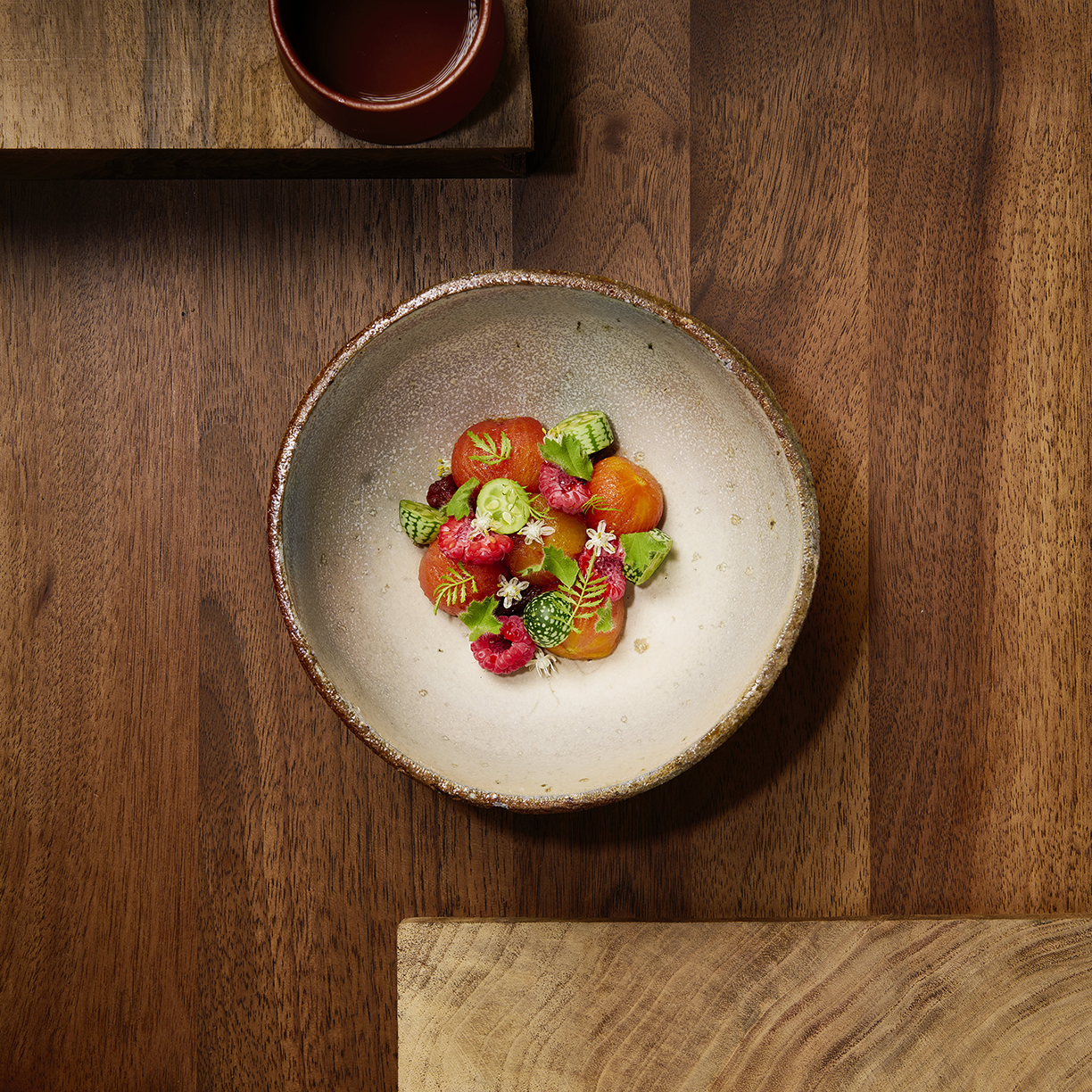
Tomatoes, raspberry and chili.
All photos and feature photo courtesy of Nikola Tomevski.
The Michelin Guide began when the tire company — Michelin Tires — wanted to encourage travelers to drive to their destinations, in turn boosting car and tire sales. This helpful guide offered maps, attractions, and briefly mentioned places to stay and eat. The publication began as a travel guide to encourage day trips and now covers a range of prestigious ventures such as the flavor and personality of dishes at restaurants. Today, the coveted Michelin stars are awarded to the very best of the best restaurants.
According to The International Culinary Center, US-based restaurants only became eligible for Michelin stars in 2005, and the list continues to grow. The ratings range from one to three and rank the most sophisticated and successful restaurants around the world.
Bvlgari Hotels & Resorts is proud to announce that both the hotel’s signature restaurants, the Italian Il Ristorante — Niko Romito and the Chinese Bao Li Xuan, have been awarded Michelin stars during the Michelin Guide Shanghai 2020 presentation ceremony.

Bao Li Xuan — 1 Michelin Star
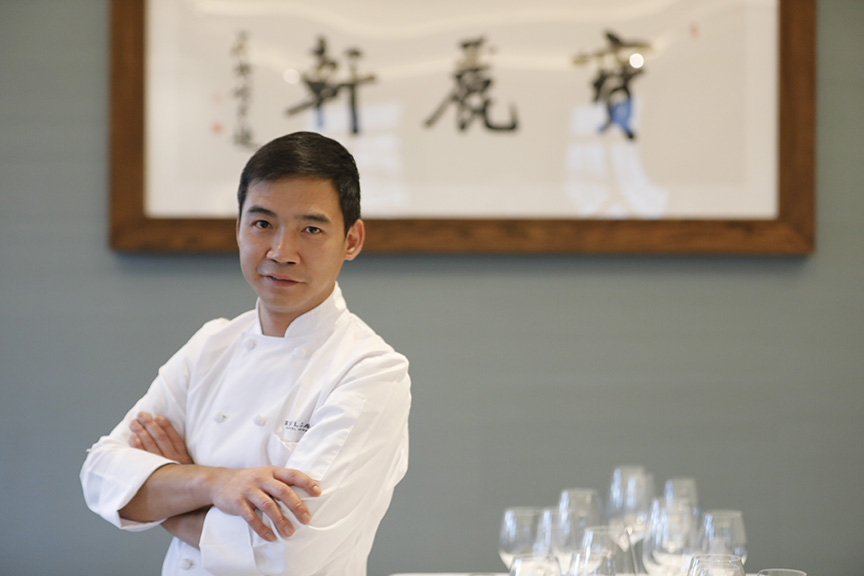
Located in Bvlgari Hotel Shanghai’s historic Chamber of Commerce Shanghai building, Bao Li Xuan will celebrate its first anniversary in October 2019. An enchanting blend of classic nostalgia and metropolitan modernity framed by its unique heritage setting dating back to 1916, the restaurant serves exquisite Cantonese cuisine prepared by Chef Fu from Hong Kong.
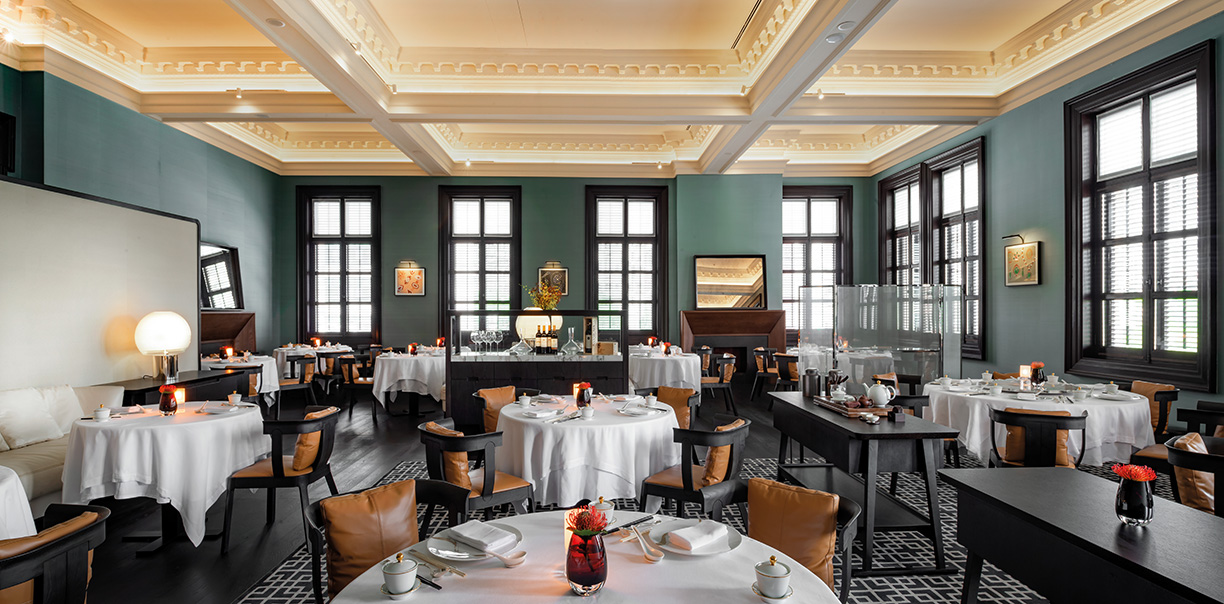
II Ristorante — Niko Romito — 1 Michelin Star
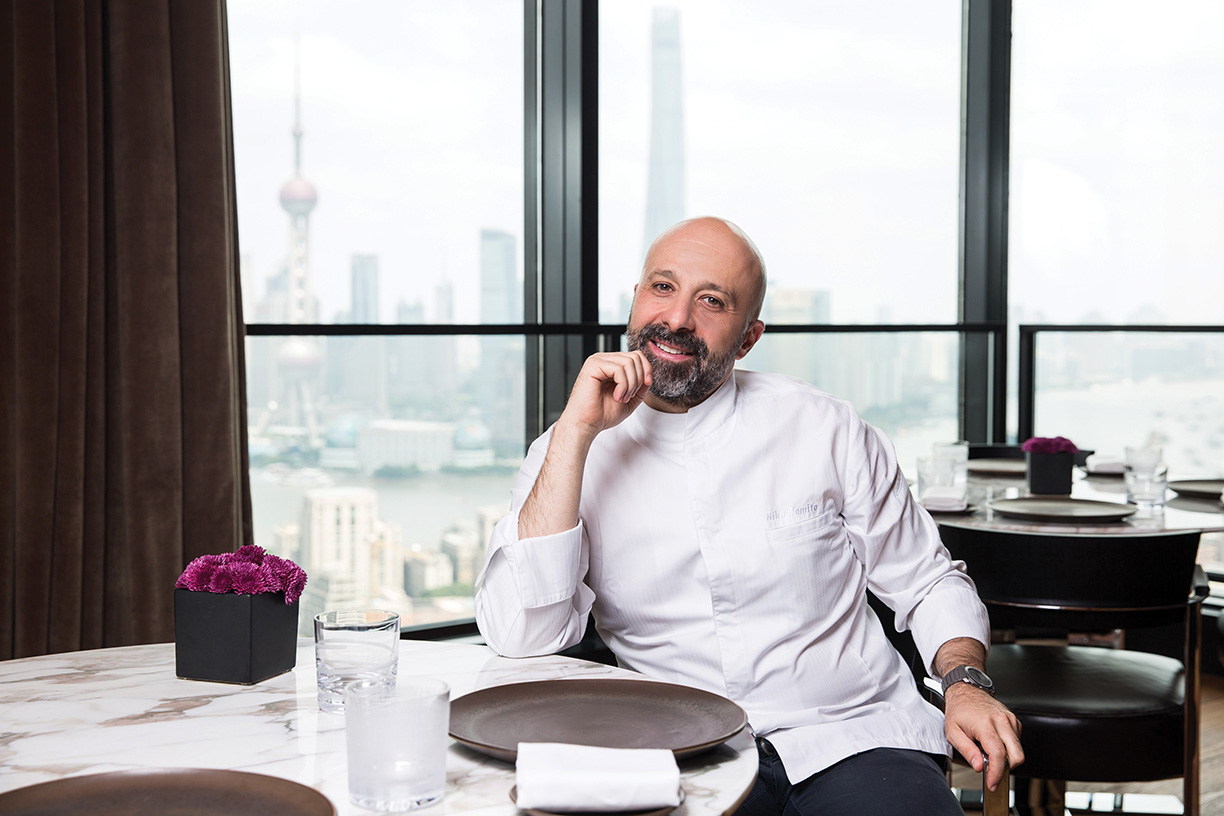
Il Ristorante — Niko Romito represents a unique collaboration between Bvlgari Hotels & Resorts and the renowned Italian chef-patron of 3 Michelin star restaurant Reale in Abruzzo. Showcasing a new gastronomic concept that the chef specially designed for Bvlgari Hotels & Resorts, Il Ristorante — Niko Romito is currently present in the Bvlgari properties of Dubai, Beijing, Shanghai, and Milan. Niko Romito is one of very few Michelin-awarded chefs in Italy to receive this prestigious acknowledgment by the Michelin Guide both in his home country and internationally.
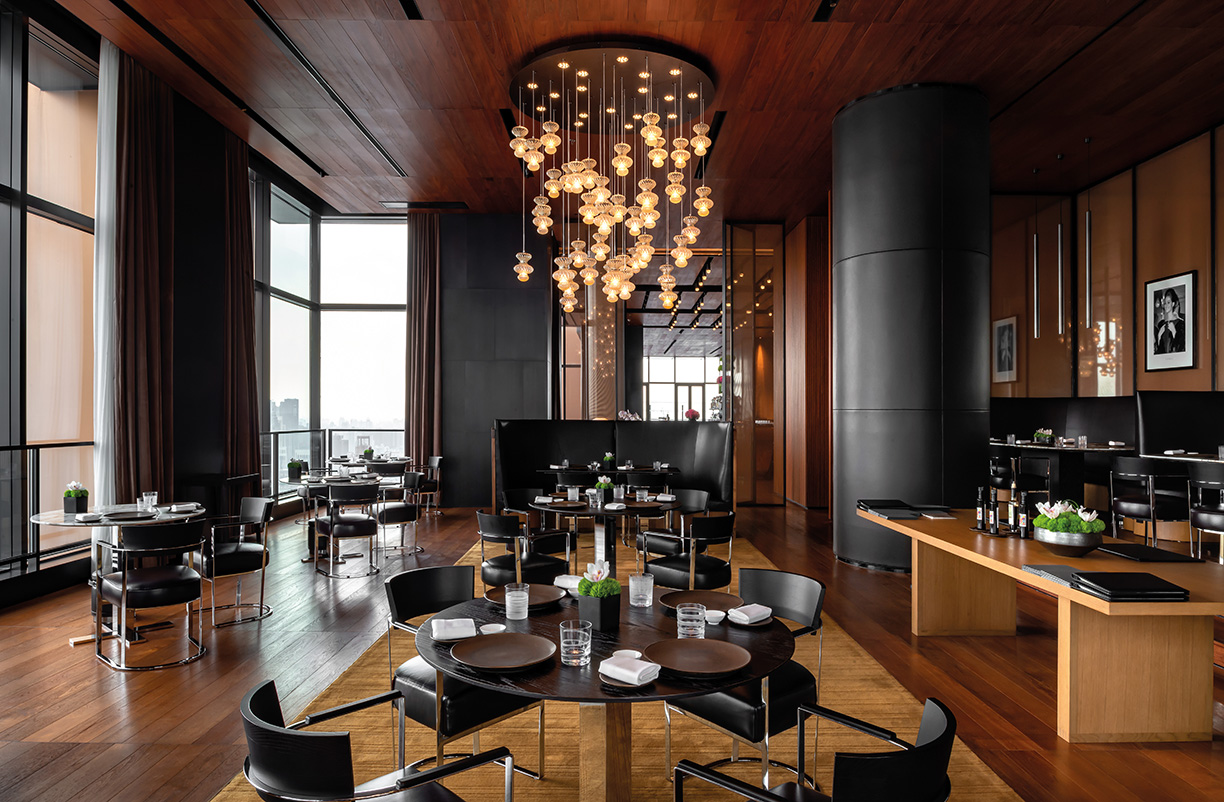
Other Michelin Rated Restaurants To Try
Michelin Rated Italian
Giovannelli (Kerry, Ireland) — Italian cuisine crafted from homemade pasta and fresh local herbs.
Crust (Phuket, Thailand) — A cozy setting for Italian classics, such as scallops with truffle risotto and tiramisu.
Hos Thea (Oslo, Norway) — This small but well-established Italian restaurant only used the freshest ingredients.
Michelin Rated Chinese
Daguan Noodle (Chicago, Illinois) — Chinese cuisine with a twist on comfort, think rice noodles and steaming bowls of broth.
Duck & Rice (London, England) — A converted pub serving delectable Chinese classics with fireplaces and booths for added comfort.
Wei Lou (Seoul, South Korea) — Located on the 34th floor of Grand InterContinental Seoul Parnas, the spacious venue, delectable favorites make it ideal for large gatherings.
Photos courtesy of Bvlgari Hotels & Resorts
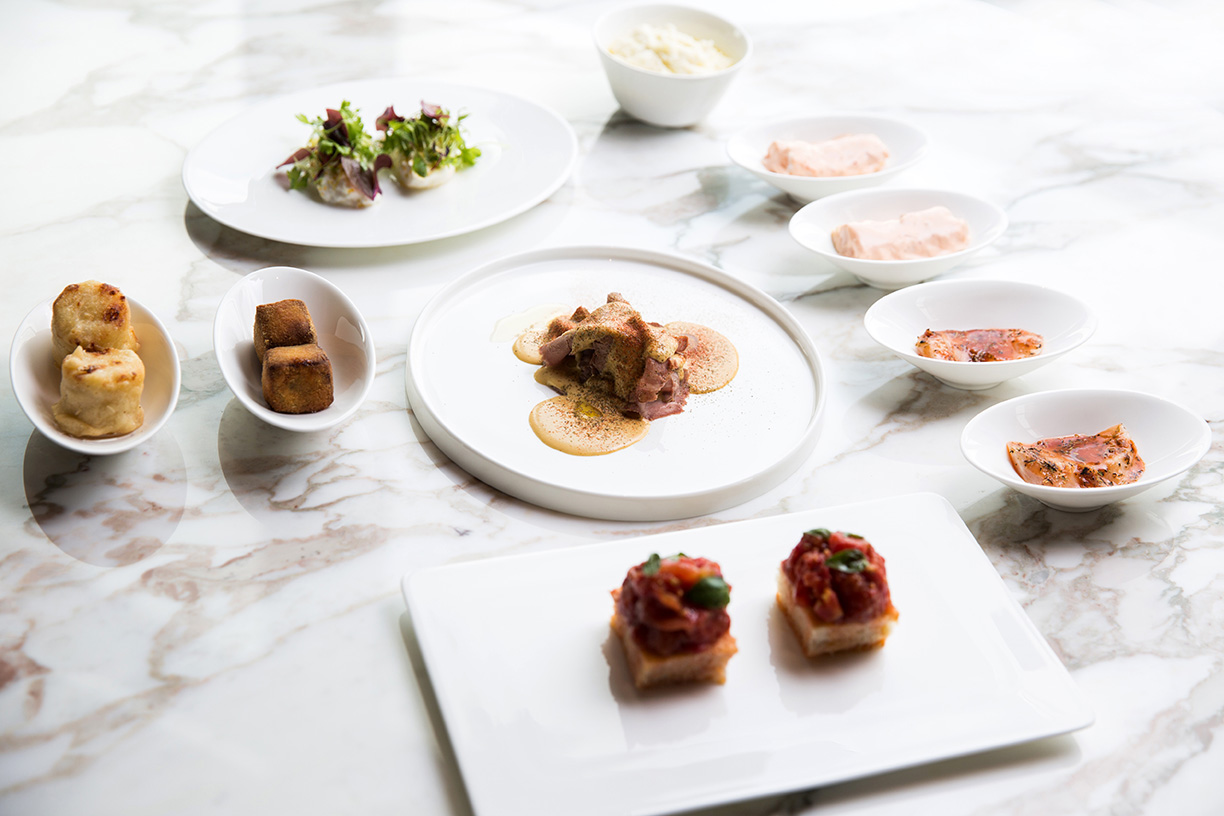
For similar content, try; Mainstream Middle Eastern, Cutting Edge, Catering to Today’s Food Trends, Gourmet Food Halls.
One of the world’s leading Peruvian restaurants, La Mar, by renowned chef Gastón Acurio, is announced as the latest culinary addition to The Royal Atlantis Resort & Residences, set to open late 2020.
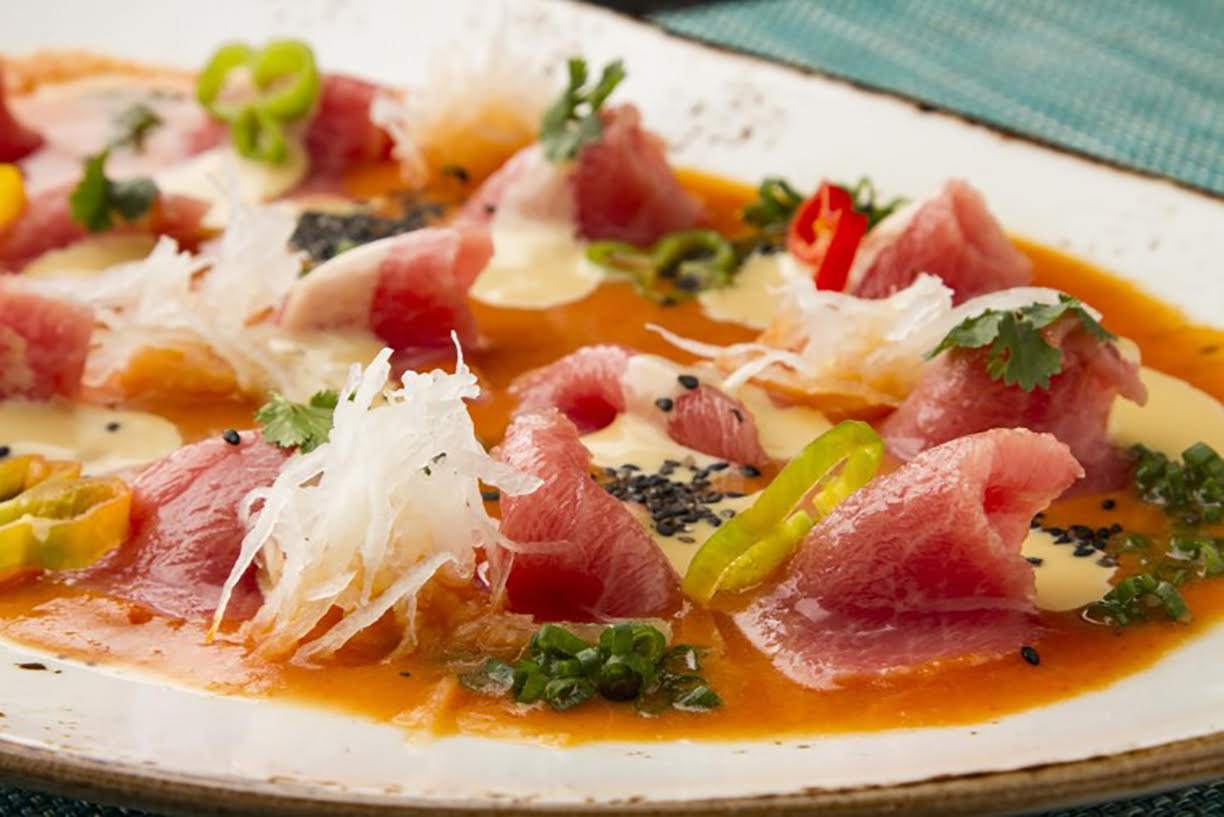
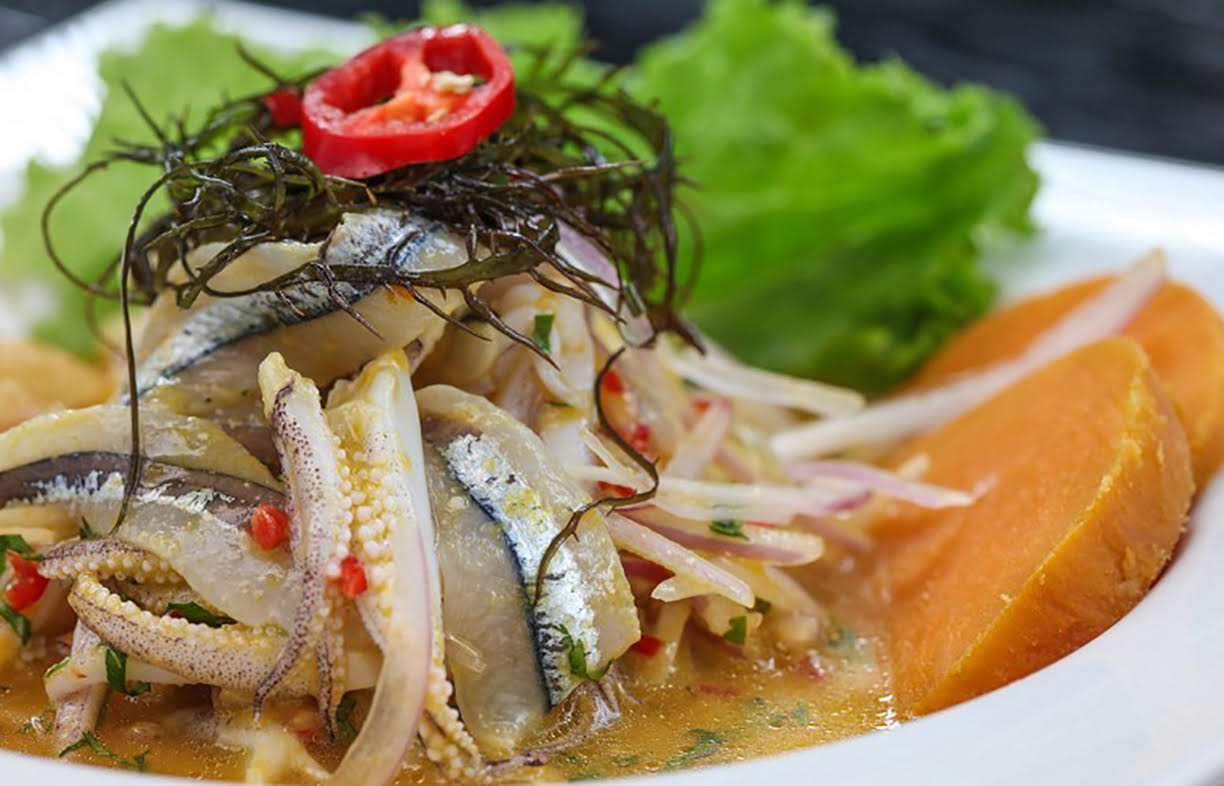
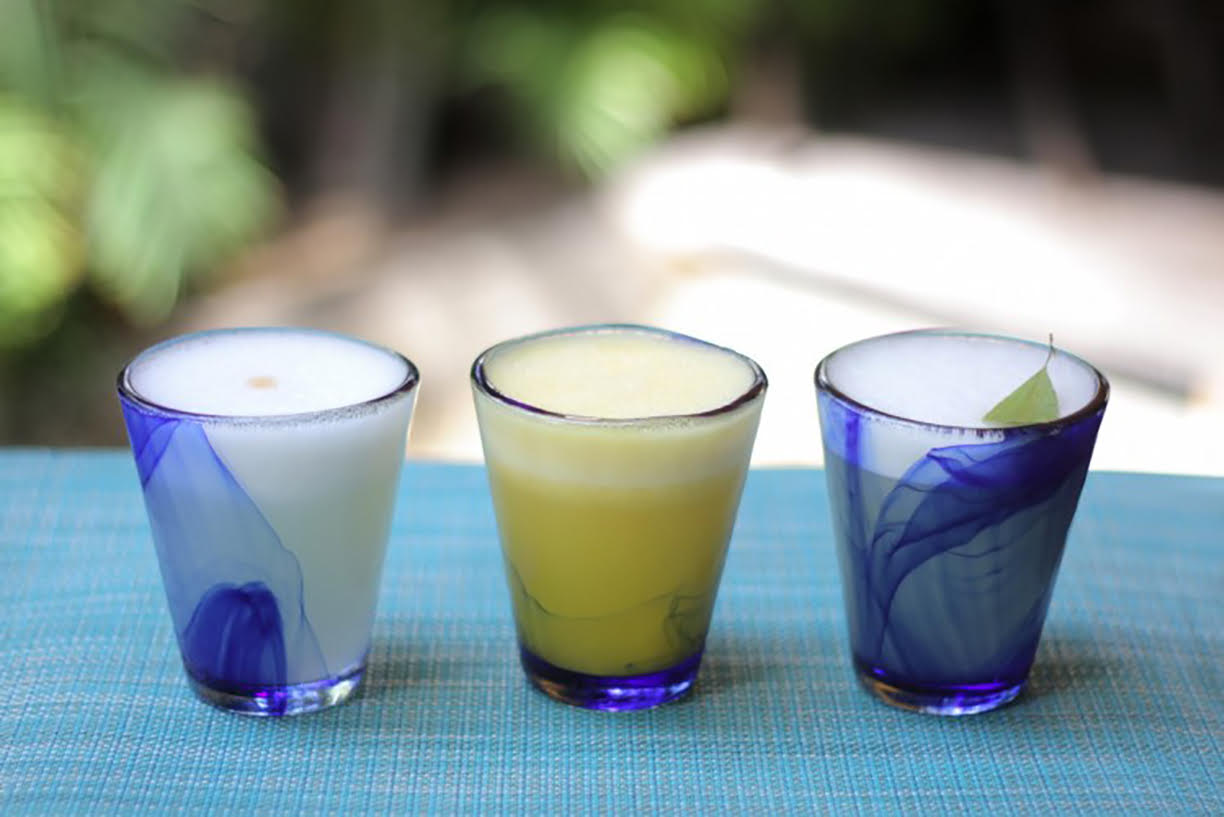
Celebrating the authentic and diverse flavors of Peruvian gastronomy, the restaurant’s contemporary design and elegant interior will provide the perfect backdrop for La Mar’s signature ceviche, freshly grilled anticuchos and pisco-led cocktails.
Renowned for his daring experiments using local ingredients, techniques and recipes, Acurio’s flagship restaurant won the No.1 spot on the inaugural Latin America’s 50 Best Restaurants list in 2013 and has held a place on The World’s 50 Best Restaurants list since 2011.
Now with over 50 restaurants worldwide, including three in America, Acurio has won the hearts and stomachs of worldwide food lovers with his unparalleled ceviche, unique Peking-style guinea pig pancake, and desserts inspired by his childhood. In 2018 Acurio was awarded The Diners Club Lifetime Achievement Award, regarded as one of the most prestigious accolades in the world of gastronomy.
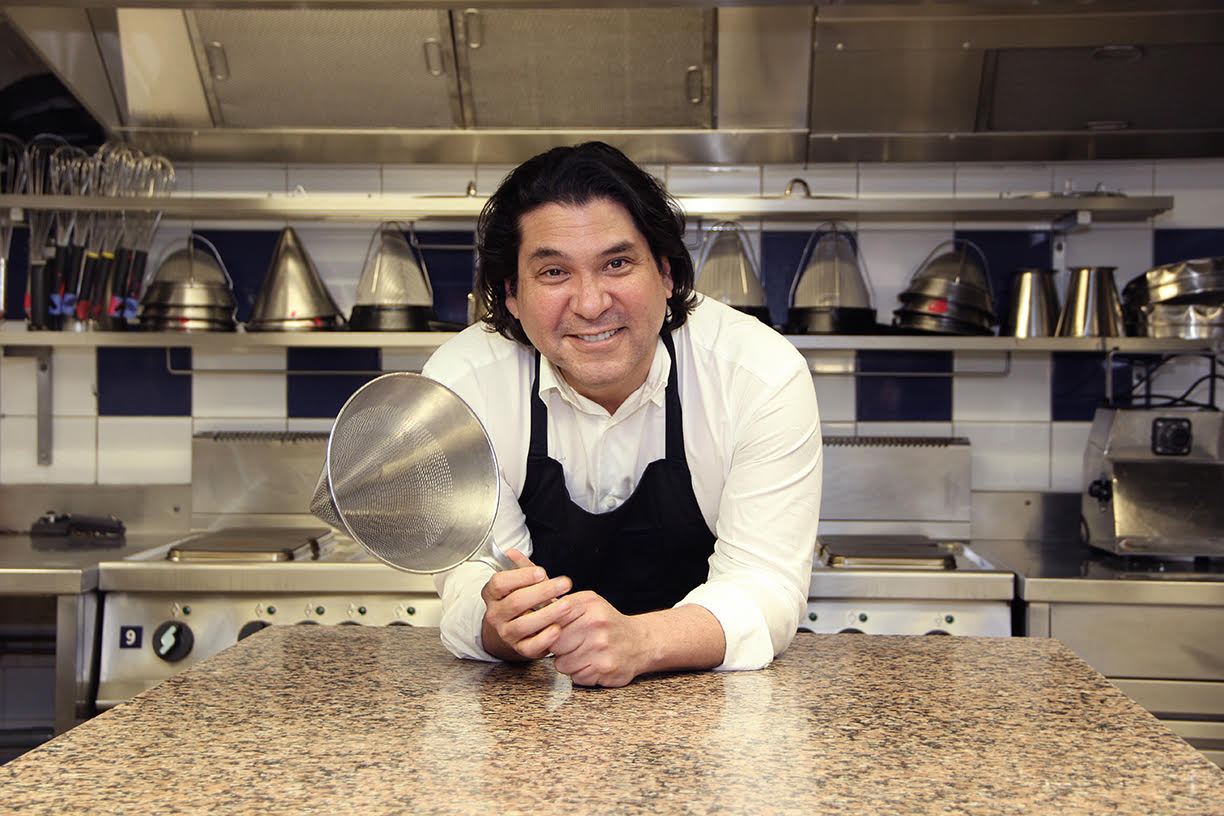
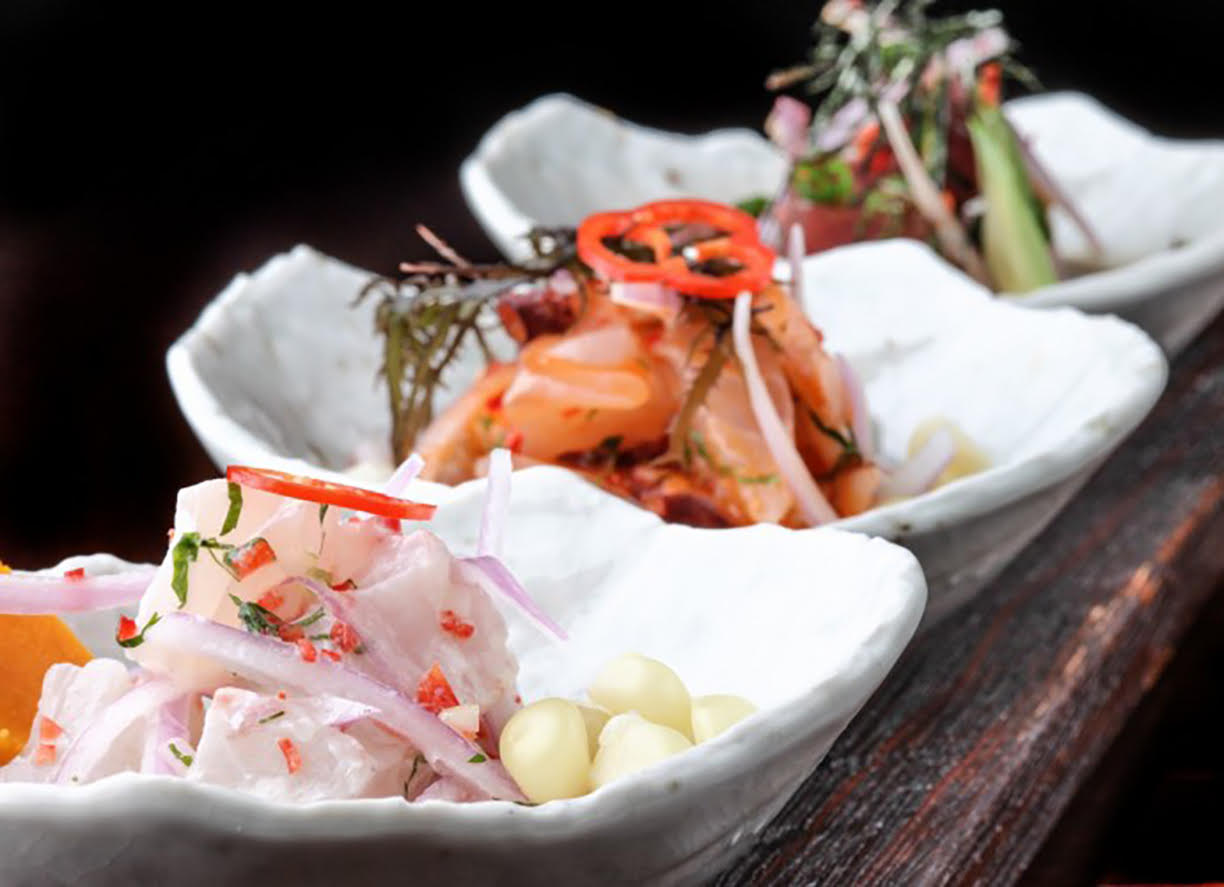
Located at mezzanine lobby level in The Royal Atlantis Resort and Residences, La Mar by Gastón Acurio will be the first traditional cebichería in Dubai, welcoming guests to an intimate space devoted to the South American tradition of ceviche and pisco sour. With a casual elegance and easy-going vibe, the signature features of La Mar will include an open kitchen, ceviche bar and an anticucho grill, where Acurio’s team of expert chefs will prepare marinated fish as well as tiraditos, causas and marinated anticucho skewers.
Inspired by the design of a ‘Fisherman’s Wharf’, guests will be greeted with a high cane ceiling upon entry with natural light spilling in from floor-to-ceiling windows overlooking the Palm Island via a large open terrace. Natural materials such as iron, cement, wood and stone complement a warm color palette of marine blues, green, sandy grey and beige evoking a sense of the ocean at every turn. Handcrafted and locally sourced tableware will emulate rock, coral, the seabed and shimmering fish scales.

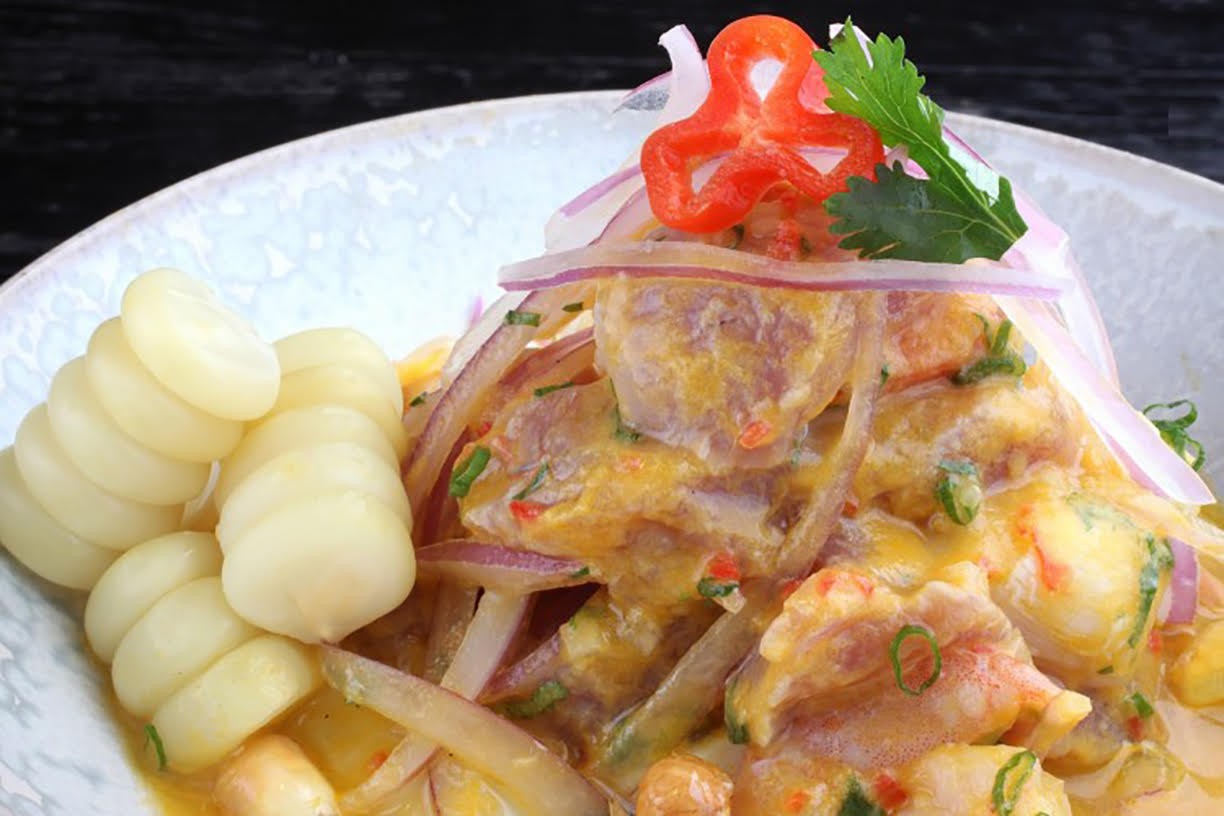
“Dubai is perhaps one of the cities with the greatest gastronomic activity in the world. The best restaurants and the most renowned chefs can be found in Dubai sharing their proposals and concepts with cosmopolitan diners who value and enjoy gastronomy as an activity that unites people and cultures.” — Gastón Acurio.
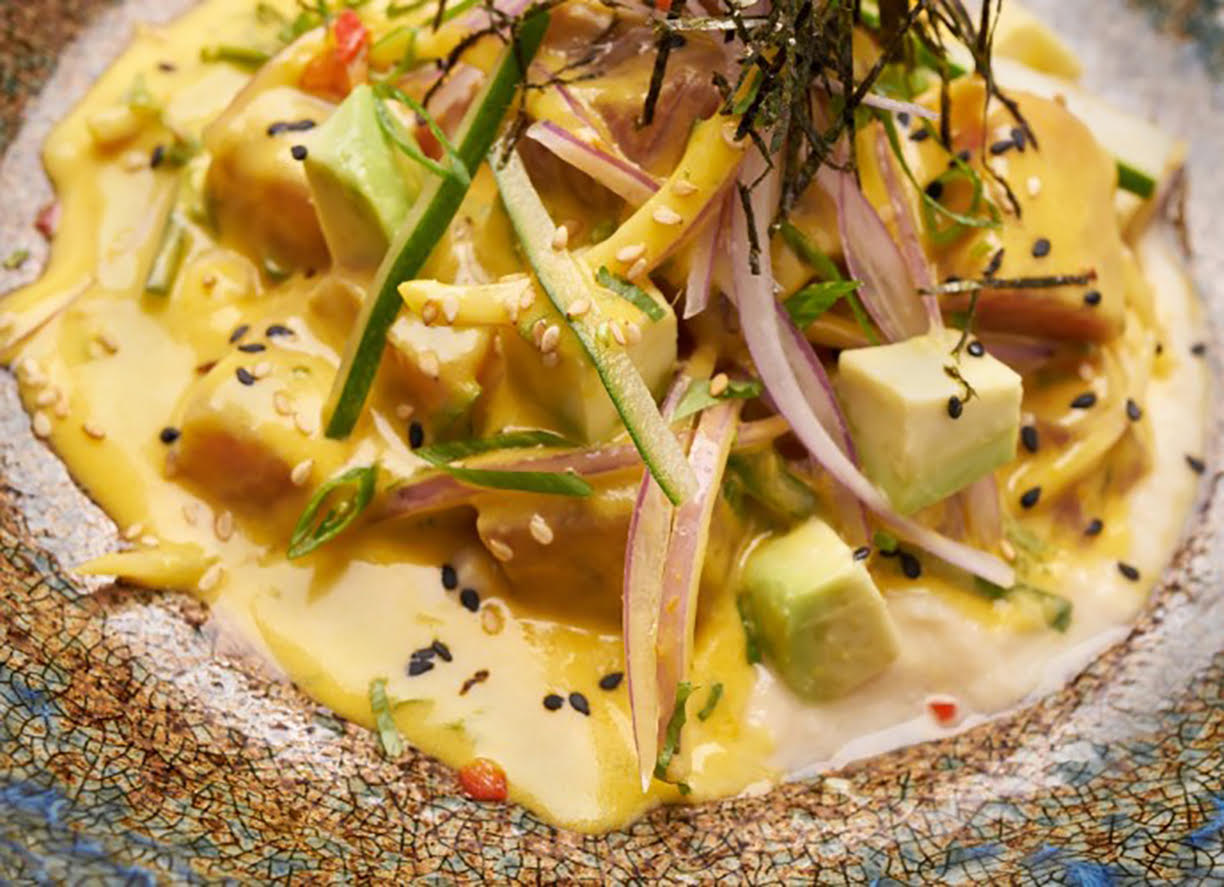
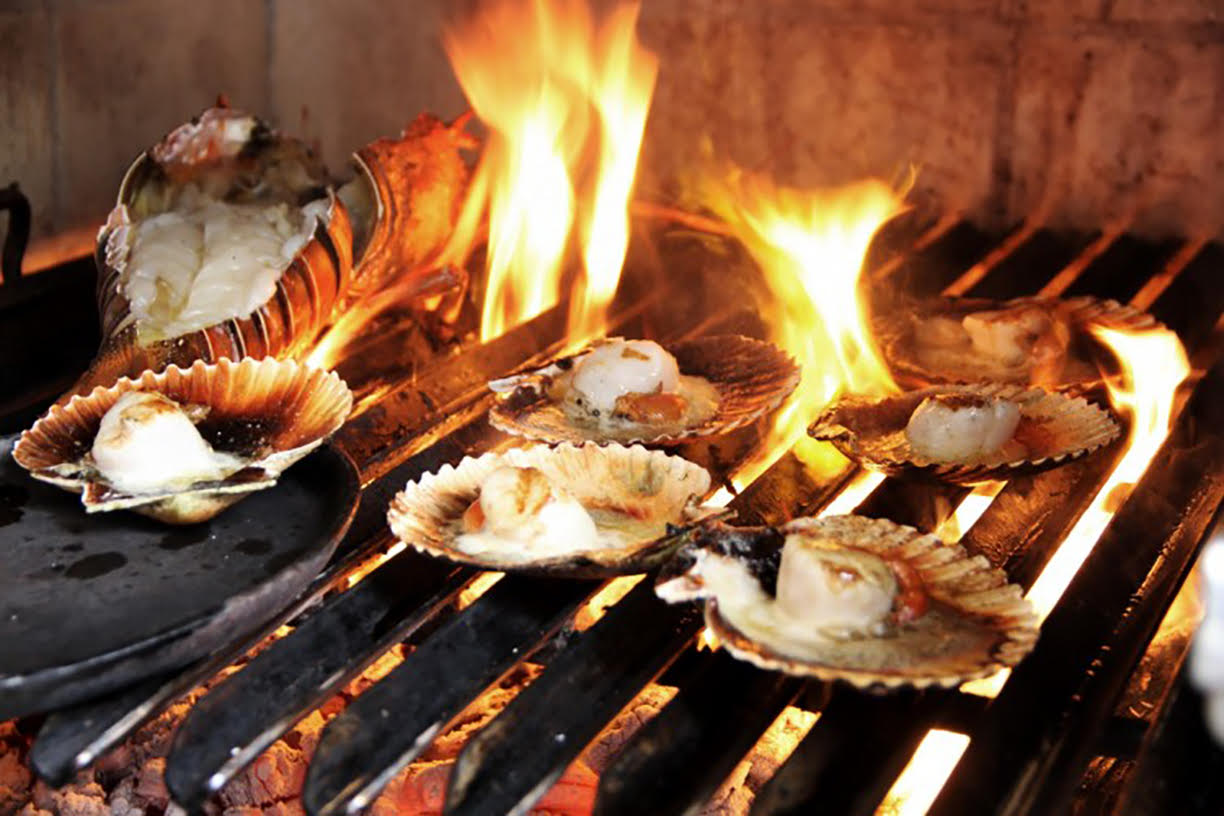
An increased focus on farm-to-table living has spurred a rise in the development of agricultural neighborhoods.
As healthier lifestyle trends continue to gain ground, homebuilders are trying to cash in on consumer sentiment through the creation of “agrihoods.” From the beautiful shores of Ecuador and open pastures of Wyoming to the rolling hills of upstate New Jersey, agrihoods are allowing homeowners to enjoy greater connections to the earth and an enhanced sense of wellbeing.
For active agrihood communities like Oceanside Farms, wellness is a major inspiration behind its development. A luxury agrihood community in Puerto Cayo, Ecuador, Oceanside Farms provides an optimal mix of pristine beachfront environment with convenient access and amenity value.
The development, according to co-founder Sean Kelly, was designed to offer a lifestyle that was unique on the levels of health and wellness. “By targeting this farm-to-table, dock-to-dish, wellness-driven lifestyle, we encompass the physical, mental and social value of our community and residents within it,” Kelly says.
Though the concept of an “agrihood” was not fully realized at that point, Kelly and co-founder Wendy Chan were able to realize their goals for Oceanside by designing the farm to remain accessible, and almost customizable, to residents through a variety of harvest privileges.
Residents can fully customize their lifestyle, from having seasonal selections brought to their door to reserving ergonomically designed growing beds where they can “place their hands in the soil and grow-their-own with pride,” says Kelly.

Oceanside Farms, Ecuador
Photo by Sean Kelly.
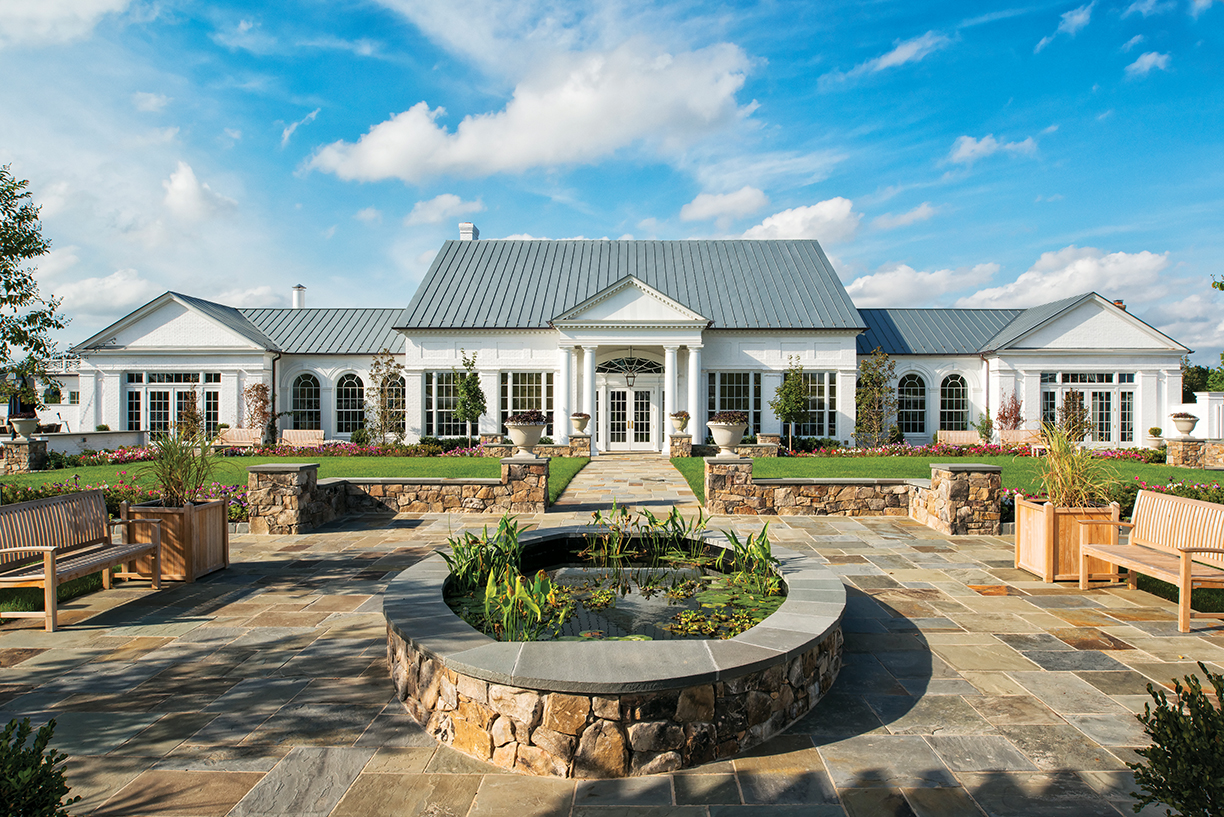
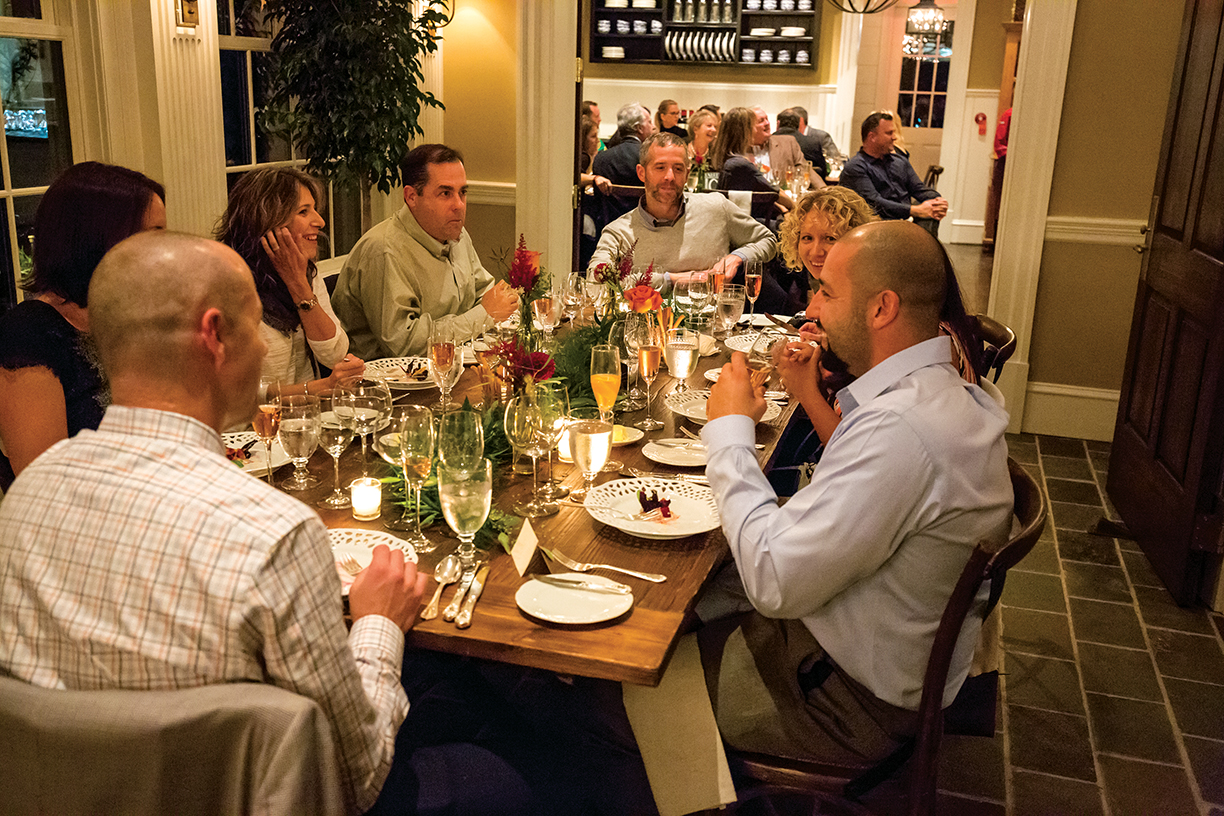
Willowsford, Virginia
Photos by © Bushnell Photography.
A refocus on food origin and quality is a large part of the expansion and appeal of agrihoods. To understand where food comes from and be involved in the process of growing it as part of the living experience sounds simple enough, but nowadays seems almost revolutionary.
Agrihoods go further by linking the home to the farm or garden, and even moreso to amenities. For an agrihood like Willowsford in Loudoun County, Virginia, this reconnection to an all-encompassing community that offers both luxury amenities and farming reverts to an almost transitional lifestyle, modern, but with traditional roots.
This transitional lifestyle is apparent as soon as you enter Willowsford. Though the community spans four distinctive “villages” on over 4,000 acres, it is defined by the recreational spaces and strong food and farm connection that encourage an appreciation for the environment and a commitment to land stewardship.
Everything about Willowsford feels close-knit, from the Farm Garden and Market Stand, open seasonally to residents and the local community with seasonal vegetables, local meat, farm fresh eggs and more, to the Willowsford Conservancy that connects and maintains the community’s forests, trails, streams, fields and farmland.
Willowsford extensively offers residents the chance to not only connect with each other as neighbors, but to connect to their food and drink. When in season, food is sourced mainly from the farm or from farms in the surrounding area.
No matter the time of year, residents can attend events like cooking classes, demonstrations, “Date Nights” or dinners that deepen that feeling of a close-knit family, with modern touches such as live instruction and on-site wine experts that tell the origins of your wine selections.
Through the landscape’s rich agricultural heritage, Willowsford stands out as an agrihood offering a transitional lifestyle, a community with modern home designs and traditional ideals of what it means to be neighbors.
The benefits of agrihoods extend further than just the plate, especially for developments that offer restaurants on site. Within the kitchen of Ninety Acres, a restaurant located on the grounds of Natirar, chefs have the chance to curate a farm-to-table dining experience for residents.
Natirar in Somerset County, New Jersey, is redesigning its country estate to become Pendry Natirar, bringing a bespoke collection of private, whole-ownership Estate and Farm Villa residences to the property with the Natirar Farm as their backdrop.
“The Natirar Farm allows people to reconnect with their passion for natural, healthy eating and a way of life authentic to the 100-plus-year history of Natirar,” says founder Bob Wojtowicz.
While residents will have direct access to Natirar’s 12-acre farm to create a true “dining table at the farm,” having a farm right outside the kitchen is even more favorable for chefs, according to Wojtowicz. “The farmers at Natirar work in tandem with the Natirar chefs to produce fresh ingredients,” he says, noting that chefs can request when the ingredients are harvested to allow them to reach peak perfection.
This sense of perfection in the dining services at Ninety Acres is prevalent, making meals feel more like an experience than just dinner. From almost anywhere in the dining area of the restaurant you get a glimpse of the chefs working to prepare your food; you see the high-rising flames and get a sensation of what’s to come just from the smells surrounding you.
And though Ninety Acres’ dedication to locally sourced ingredients is well known, its appreciation of these ingredients is fully realized in the dishes they create, from a creamy, savory egg dish that feels like a fluffy, buttery cloud to thin slices of cheese and crispy pork that taste utterly sinful.
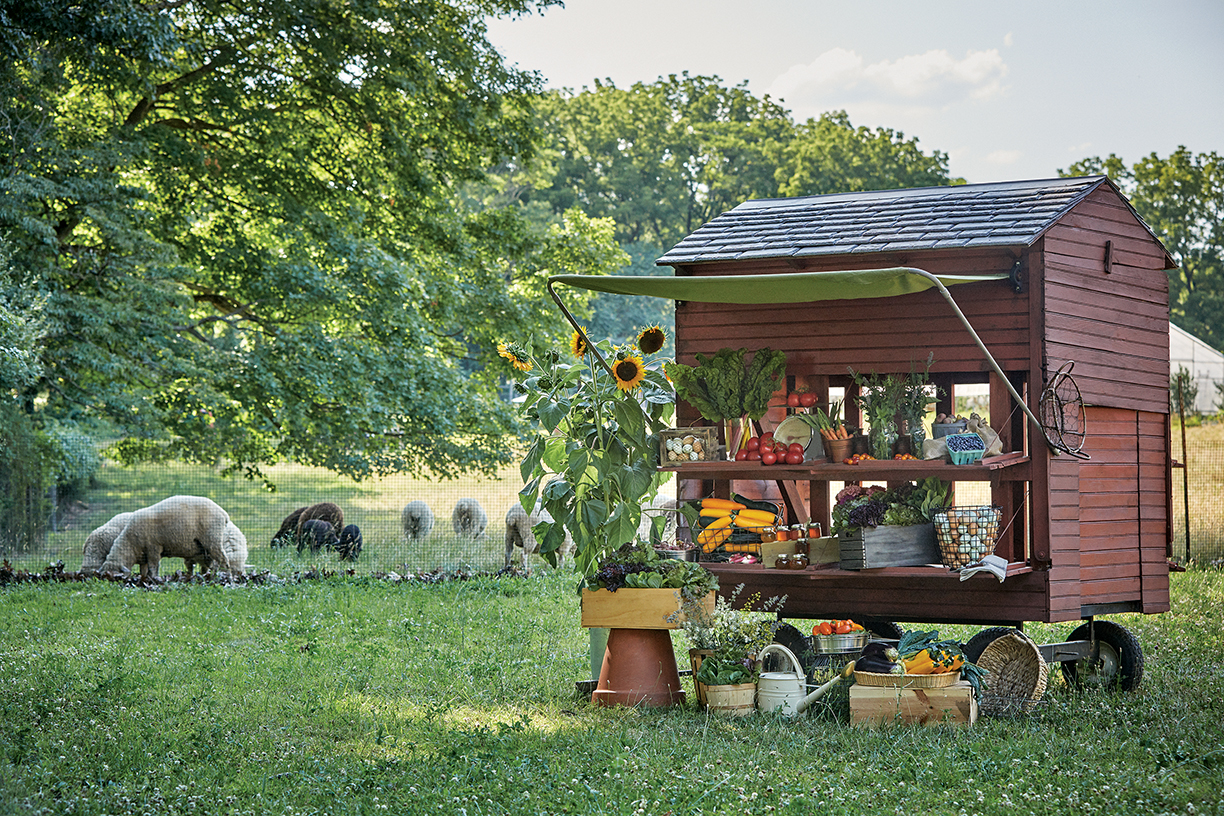
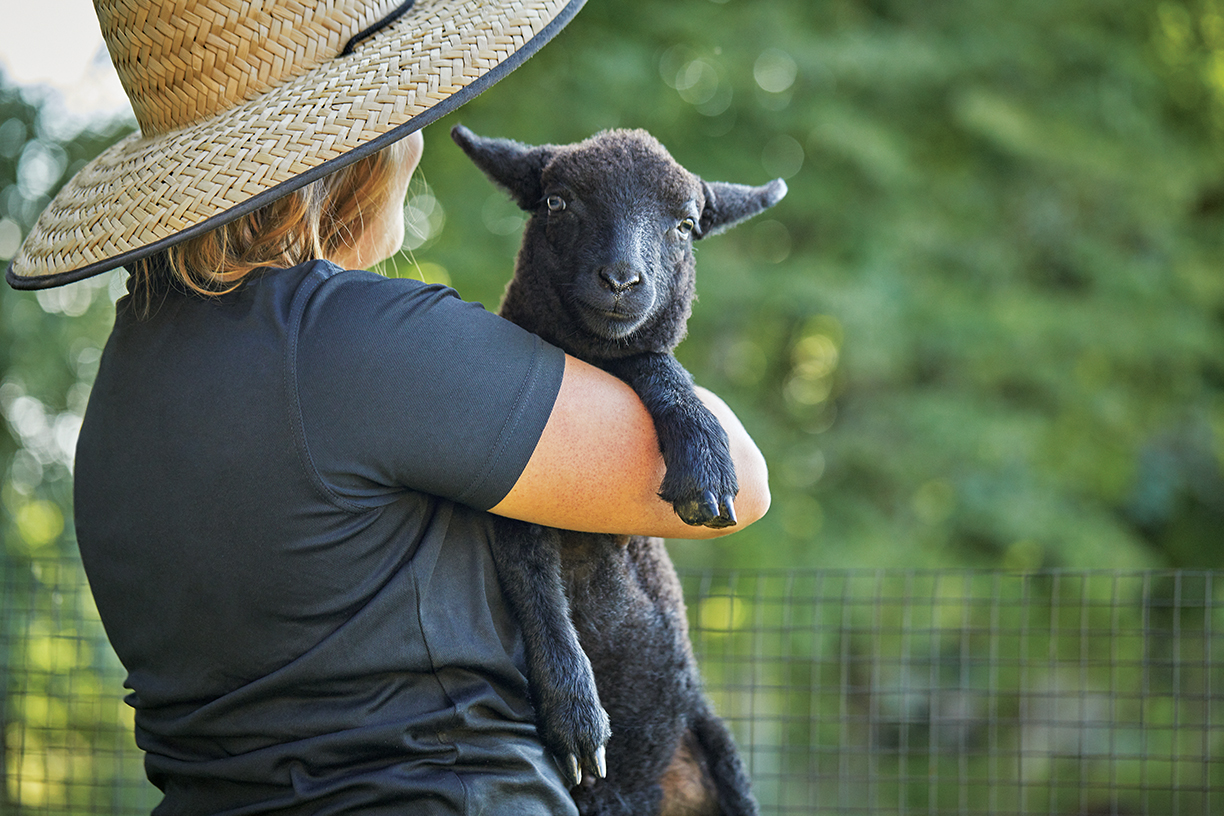
Pendry Natirar, New Jersey
Photos by Christian Horan.

Brush Creek Ranch, Wyoming
Photo by Dan Ham.
Through agrihoods, culinary experiences developed for residents offer a unique opportunity to revel in the process of cultivating, harvesting, preparing and savoring food in the beautiful landscape where it is grown. For example, Wyoming’s Brush Creek Ranch intends to deliver the new Farm at Brush Creek Ranch to create an immersive epicurean adventure of the highest quality that captures the flavors of the West, according to Michael Williams, executive vice president and COO of Brush Creek Ranch.
“Each of the individual components of The Farm are destinations within themselves…. Each feature maximizes views of the landscape and uses color palettes and design elements from the respective processes (brewing, distilling, cheesemaking, et cetera) and treats both as art for the interiors,” Williams says.
So much of the purpose behind agrihoods relies on education and granting residents accessibility to sustainable farming and resources, ideals that are becoming more appealing to luxury developers, says Wojtowicz. The concept offers a “new way to deliver a deeper connection to the location, wellbeing offerings and, better yet, a sense of community.”
Editor’s Note: Kristen Ordonez visited Willowsford and Ninety Acres as part of this special report.
This editorial appeared in the Unique Homes Spring ’19: Elite edition.

No matter how much room there is, taking advantage of your outdoors can not only further personalize the space but create the perfect oasis that fits your needs. From the atmosphere and design to the fun accessories that are customized for you, these fun pieces are crafted to help you indulge in the warm months.
For the Lounger
The Swing Lounger by AMAZONAS combines floating comfort with modern, stylish design as an eye-catcher for the home, both outside and inside. The stylishly curved lying surface is exactly adapted to the body and allows comfortable reclining, relaxing and enjoying.

Photo courtesy AMAZONAS.
Swing Lounger is made in carefully handcrafted weatherproof treated spruce. The high-quality layer bonding ensures maximum stability and safety. The extra thick, water-repellent and extra fast-drying mattress guarantees perfect relaxation. The extremely resistant agora fabric cover is as soft as cotton, has high resistance to light and weather, is water-repellent, mold-resistant, dirt-resistant and easy-care.
For the Late-Night Entertainer
To enjoy the sweetness of summer until late at night, online store Nedgis offers lovely yet versatile lighting fixtures and pieces, perfect for any corner of your outdoor space from the terrace to the garden. For a dinner, a party or a conversation in a low voice, these mood lights provide high-performance lighting. Fixed or mobile, discreet or more imposing, each lamp brings with it its atmosphere and its little decorative touch.

aGlow offers a trendy, lightweight design that defies the boundaries between the inside and the outside of the house. With aGlow, you have both a lamp and a wireless speaker with Bluetooth capabilities, a battery life of up to 20 hours and a short charge time. It’s perfect for hot summer evenings on the terrace, in the tent, at festivals, on vacation or in the living room when darkness arrives. The design is simple and elegant, ready to dance! The lamp is delivered in a beautiful wooden box, ideal for a gift.

Created by the designer Tristan Lohner, the Moon walker lamp is strongly inspired by the 19th floor lamps with its fluid lines and harmony between matter and color. Practical, functional and decorative, Moon decorates and illuminates your exterior in a friendly and efficient way. The portable light has a battery life of 8 hours and its USB cable allows it to recharge easily! To put on your table, in mood light or as a bedside lamp, Moon finds its place inside as well as outside! It offers two lighting temperatures to best fit your mood and your desires.
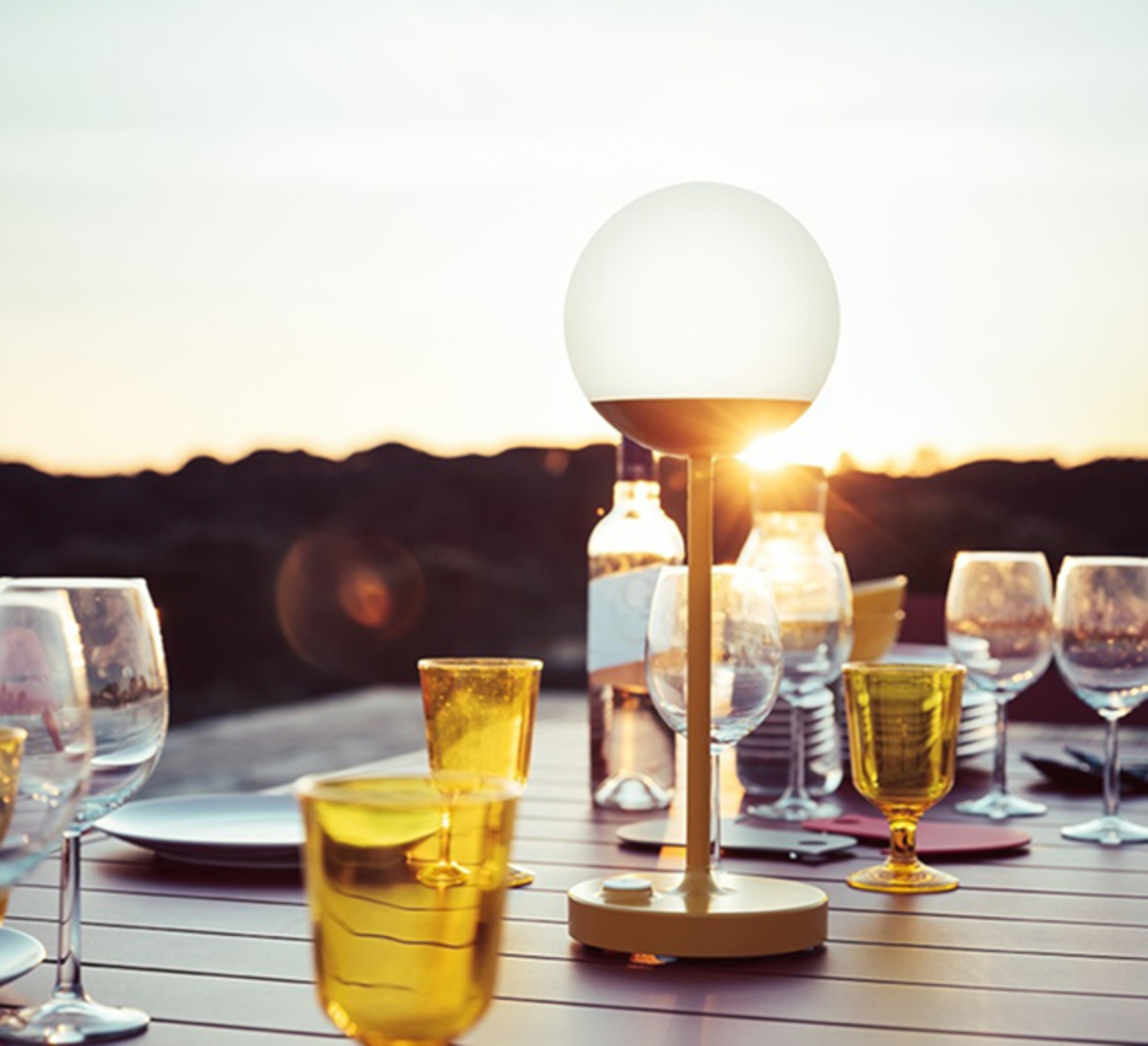
All light photos courtesy Nedgis.
For the Master Chef
Brand new to Cuckooland, the Ooni Koda Gas-Powered Outdoor Pizza Oven is lightweight, compact, gas powered and ready to use straight out of the box! Live in pizza paradise with this luxurious accessory that includes an Ooni Koda pizza oven, a stone baking board and a propane tank gas regulator. Impress your guests by cooking and serving a delicious pizza in just 60 seconds at your garden party. This pizza oven is compact and light and can also cook fish, vegetables and steaks, making it the perfect camping companion to cook a memorable outdoor banquet.
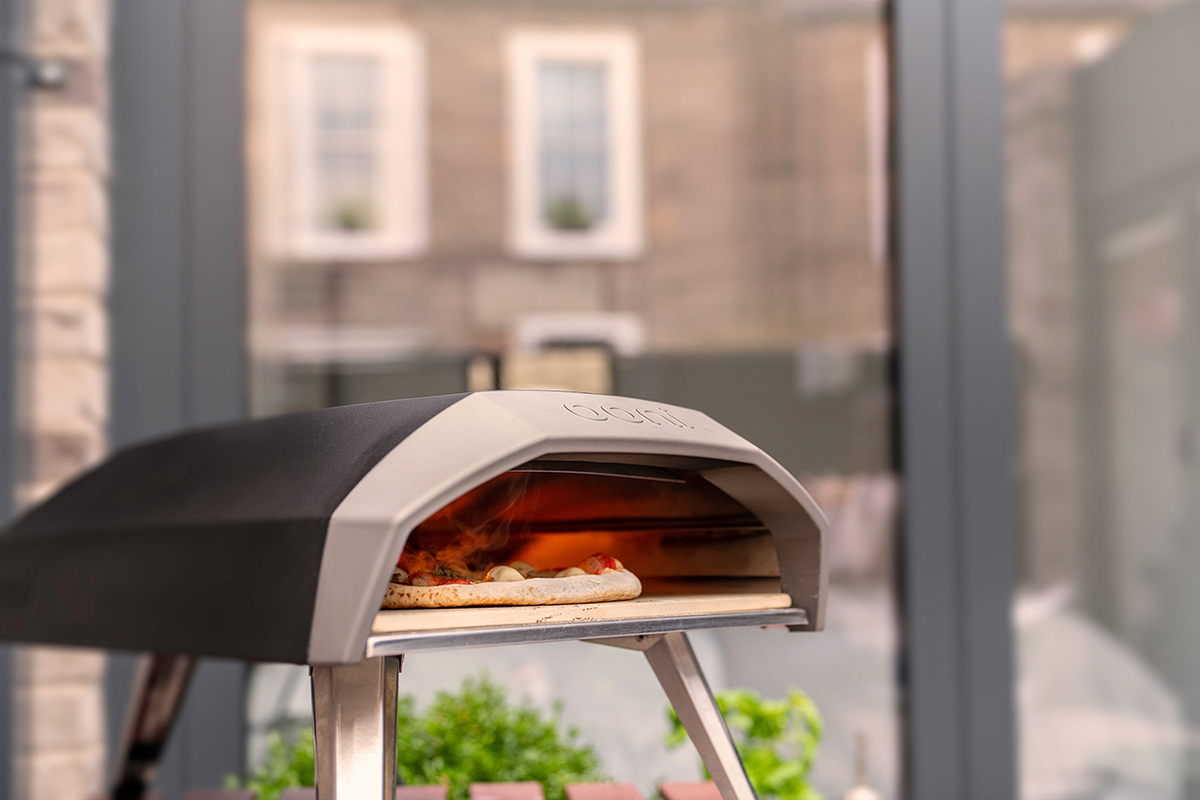
Photo courtesy Cuckooland.
The attendee of a modern upscale event expects more than a standard plate of meat, potatoes and vegetables. This year’s catering trends address the demand for a more exciting, sustainable and updated take on the culinary soundtrack to an elegant event. With an ever-growing selection of vegan fare, an emphasis on locally sourced ingredients and the visual appeal of station-based catering, partygoers have more choices than ever when it comes to fine dining.
Whether it be for health or other reasons, many have recently chosen to restrict their diets to avoid animal products. Caterers have not missed a beat in having options for the growing vegan population, and have also created custom menus for diners with other dietary restrictions. While an all-vegan menu may be perceived as a hurdle for a host concerned about the satisfaction of non-vegan guests, hearty vegetable-centered entrees like roasted eggplant have become popular solutions that please all guests.
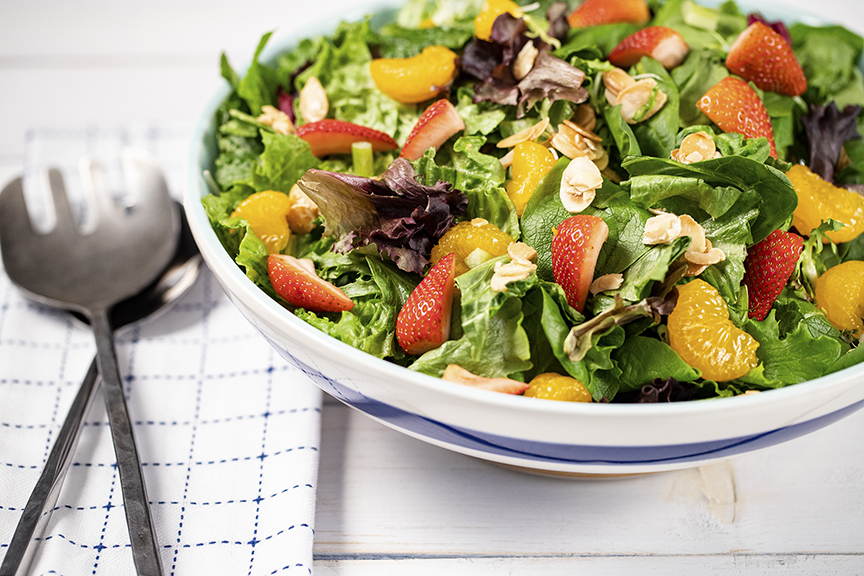
Guests have an array of vibrant vegan options to choose from.

Veganism is not the only movement to emerge from growing concerns about healthy and sustainable food; providing locally sourced foods is critical to the environmentally friendly host. In 2019, caterers showcase their local sources of produce, meat and dairy products to appeal to guests striving to limit their consumption of food that requires ecologically costly transportation to arrive on their plate.
While it has long been known that we eat with our eyes, trendy showstopping presentations are relatively new to the catering scene. Engaging and interactive stations with visually appealing options are beginning to bridge the gap between food and entertainment at events.

Left: Flame-seared steak is prepared live in front of guests. Right: Molecular cocktails add an innovative twist to catered beverages.
The Chicago-based company Catering By Michaels presents custom stations where foods like ramen or flame-grilled steak are prepared in front of the consumer. These awe-inspiring showcases of elegant cooking elevate the experience for guests at high-end gatherings. Catering By Michaels has found that stations are the perfect way to wow a crowd looking for a diverse array of options, each with its own charming twist.
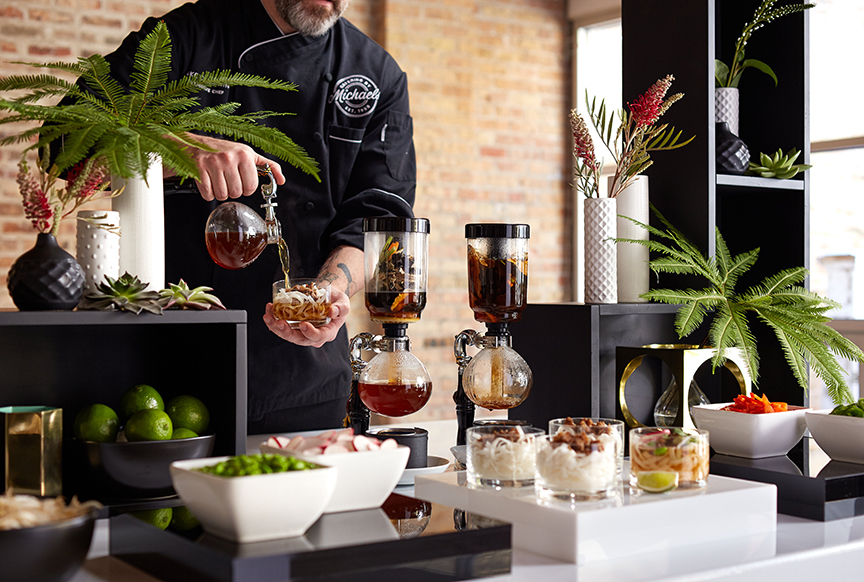
Catering By Michaels’ unique Ramen Station.
Photos courtesy of Catering By Michaels.
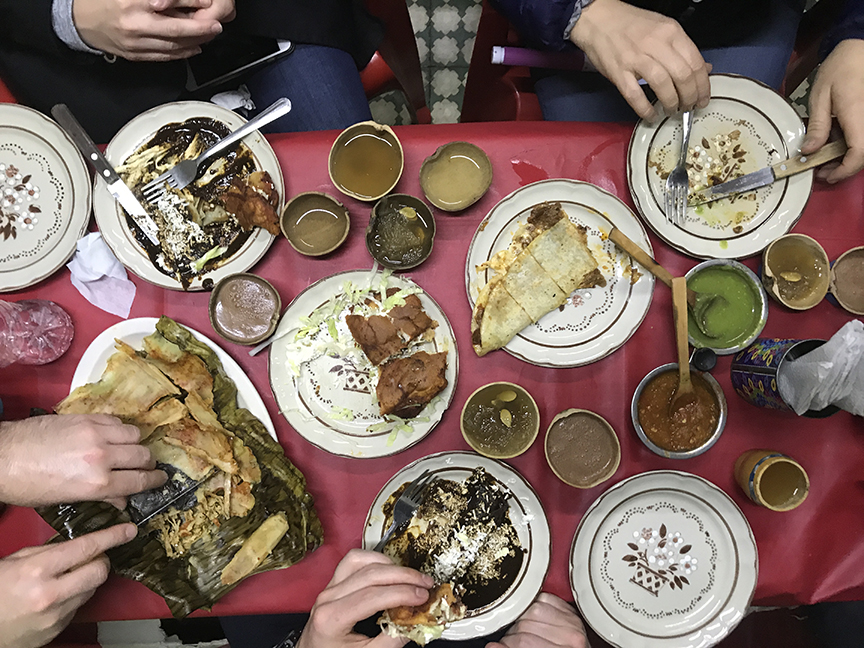
Consistently ranked among the top places to visit, Mexico City is a world capital welcoming more than 12.5 million visitors each year who come for its renowned cuisine, vibrant culture, rich history, unique neighborhoods and modern-day travel offerings. For an insider’s view of Mexico City’s food scene, Rocio Vazquez Landeta, founder of Eat Like a Local Mexico City, helps navigate travelers through the city’s neighborhoods to hidden culinary gems through her expert food tours, three of which will newly debut in 2019.
Born and raised in Mexico City, Landeta is a world traveler and food researcher, as well the owner of one of the first food blogs in Mexico, sin Mantel. After studying Mexican cuisine and culture at the Mexican Gastronomy School, she founded the company to take travelers through the streets of the vibrant Mexico City to taste, explore and connect with Mexico City’s food scene, markets, restaurants and people. “Food is an amazing tool because it is one of the few things that you can experience with all your senses. Through the food, we help travelers connect with the people behind the food. Through the food we create stories and we explain our roots and history.”
Discovering all the great places that only locals know, Eat Like a Local Mexico City’s food journeys showcase cutting-edge restaurants along with secret food stalls and street food that offer the most authentic Mexican cuisine.
The Mexico City Foodie Immersion tour covers all aspects of Mexican food. The 4.5-hour experience begins at a small coffee shop where travelers learn about the coffee culture in the city. With coffee in hand, the tour explores street food delicacies including Mixiotes, basket tacos, and rotisserie chicken. The journey continues to the subway to explore a traditional market with an array of carnitas, corn, tostadas, fruit and chorizo. Travelers then visit La Merced, the second biggest market in the city for candy tasting, pineapple juice, fish tacos and a visit to a local woman’s house for a homemade meal. The tour comes to an end at a hip, modern lounge for authentic cocktails.

For the adventurous eaters, the Street Food at Night and Hidden Neighborhoods tour explores three hidden neighborhoods in Mexico City, San Rafael, Guerrero, Santa María la Ribera, and introduces foodies to eyeball and brains tacos. For the conservative eaters, enjoy al pastor or brisket tacos. Mole is the highlight of this tour and the group will eat traditional homemade black and yellow moles; taste mezcal, tejate, tepache, and other traditional Mexican drinks; and eat birria, chiles rellenos and churros. Finish the evening tour walking around the historic center and learn about Aztec legends while visiting the famous tile house.
However authentic the experiences are, Landeta’s passion for these tours extends further than the plate. “The food in Mexico City is of course is amazing, but our tours are more about getting to know the people behind the food,” she says, from hanging out with the locals, being hugged by the kids at the market and more. “Everybody says that they absolutely love the food, but what makes Eat Like a Local special is the people working with us — the guides, the vendors, the kids and the chefs.”
Eat Like a Local Mexico City is also the only Mexican-founded food tour agency that actively promotes economic growth and creates opportunities for families within the traditional markets. All of Eat Like a Local’s food tours support the local community. For example, the Mexico City Foodie Immersion tour supports the 80 IQ program, a program where 12 children at the La Merced Market learn English, receive monthly mentorship, participate in recreational activities and also, work as guides during the weekends. The Mexican Wine and Pulque Journey supports single mothers from La Merced Market through lending business advice and exposure, participation in pop-up events and mentorship. The Street Food at Night and Hidden Neighborhoods tour donates food and meals to homeless people as well.
In the end, everything comes back to the heart and home for Landeta. “Every dish has a soul, each cook creates dishes with his hands but also with his heart. Eat Like a Local creates a love affair with the food, but also with the people,” she says.
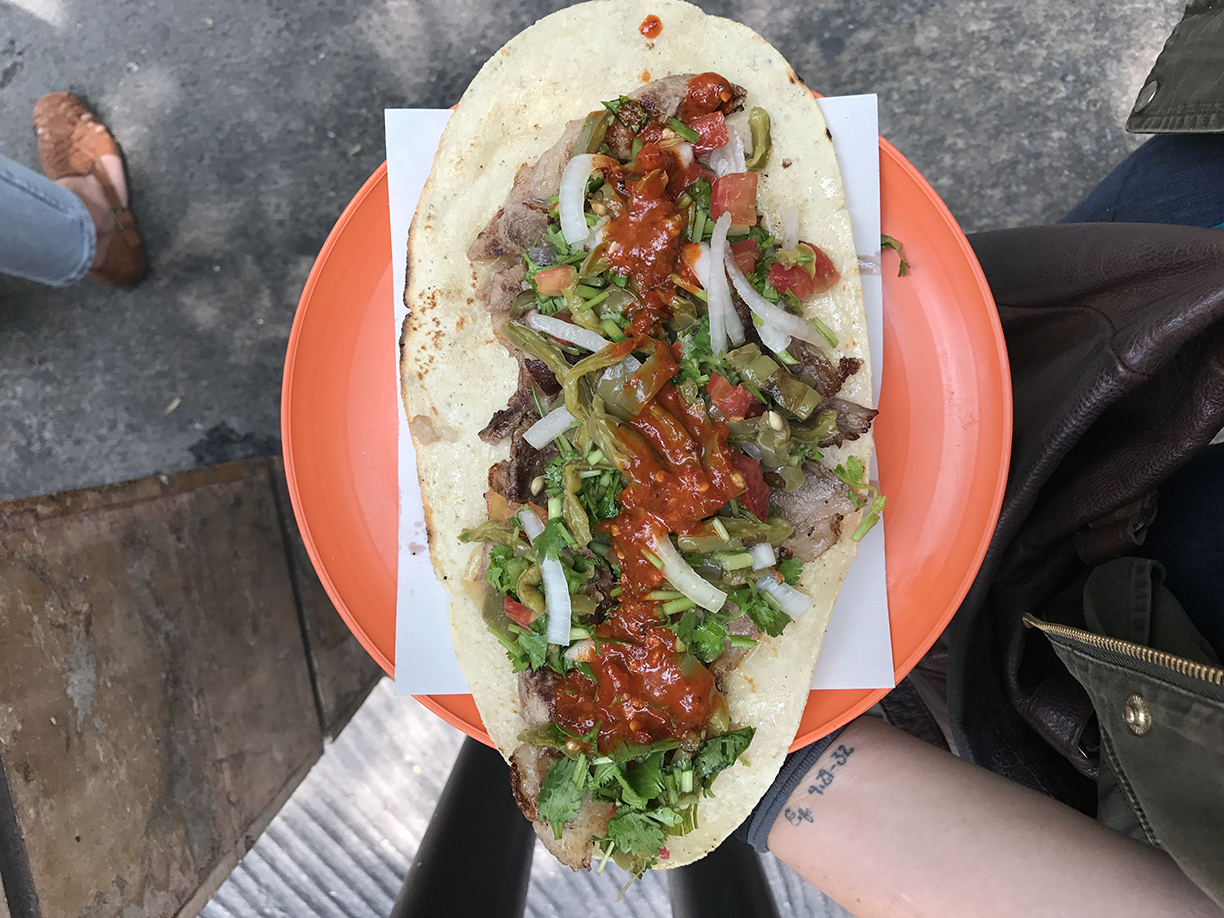
The Mexican Wine and Pulque Journey is hosted by Sara Garza, a sociologist who grew up in the Roma neighborhood. Guests explore Garza’s favorite spots including the traditional places she grew up eating at, as well as new, trendy hotspots. Starting at Eno, Enrique Olvera´s famous deli, taste green pozole, pastor tacos, Mexican-Argentinian tacos and more. Travelers will learn about Pulque, the pre-Hispanic drink made from the agave plant. End the afternoon at a winemaker´s shop where the group tastes four different Mexican wines paired with Mexican craft cheese. The tour unveils the hidden history behind the wineries and guests will learn about the Mexican wine world with an expert.
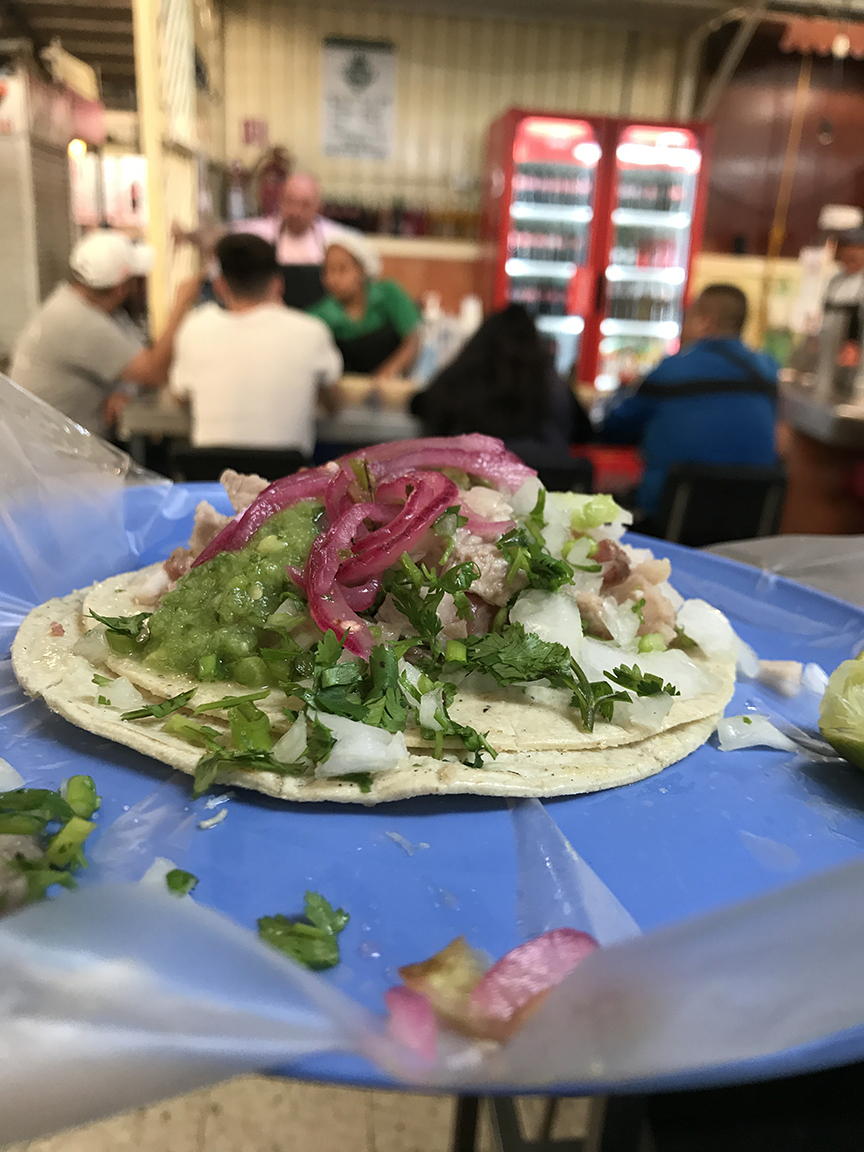
All photos courtesy Eat Like a Local Mexico City.
Once relegated to unpretentious mom-and-pop eateries, the diverse cuisine of the Middle East has graduated to sophisticated, award-winning restaurants across America.
Every Middle Eastern culture has its own food (some countries even have distinct local cuisines), but culinary boundaries are much more amorphous than national borders. Despite a surprising degree of cultural diversity, the region’s indigenous products — chickpeas, dates, pomegranates, saffron, and olive oil, to name a few — result in some universal themes, even among adversaries.
Additionally, the use of spices like turmeric, cumin, garlic and sumac contribute to consistencies from Israel to Turkey, Lebanon to Iran. The cooking of all of those distant lands is drawing unprecedented interest among American diners, who are attracted by both its exotic qualities and relative healthfulness.
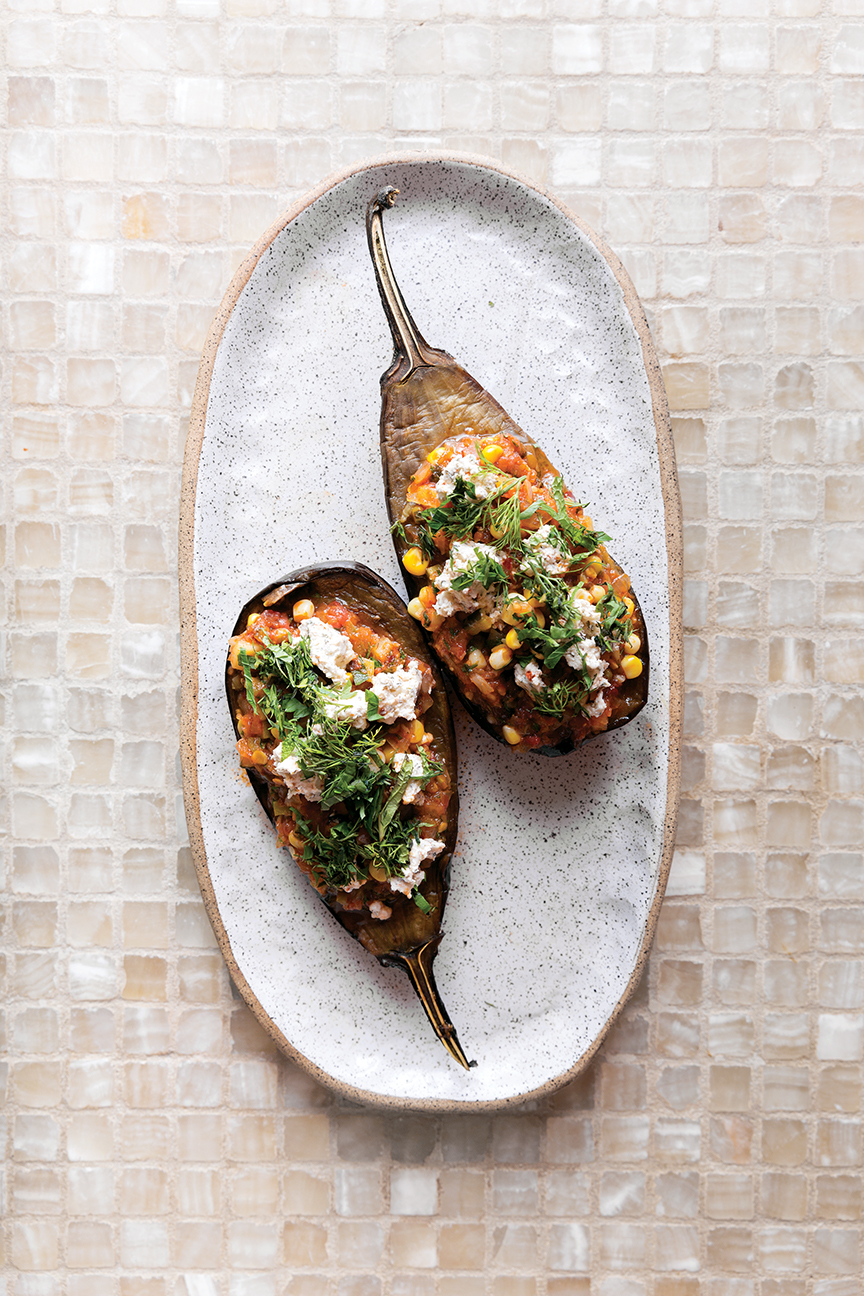
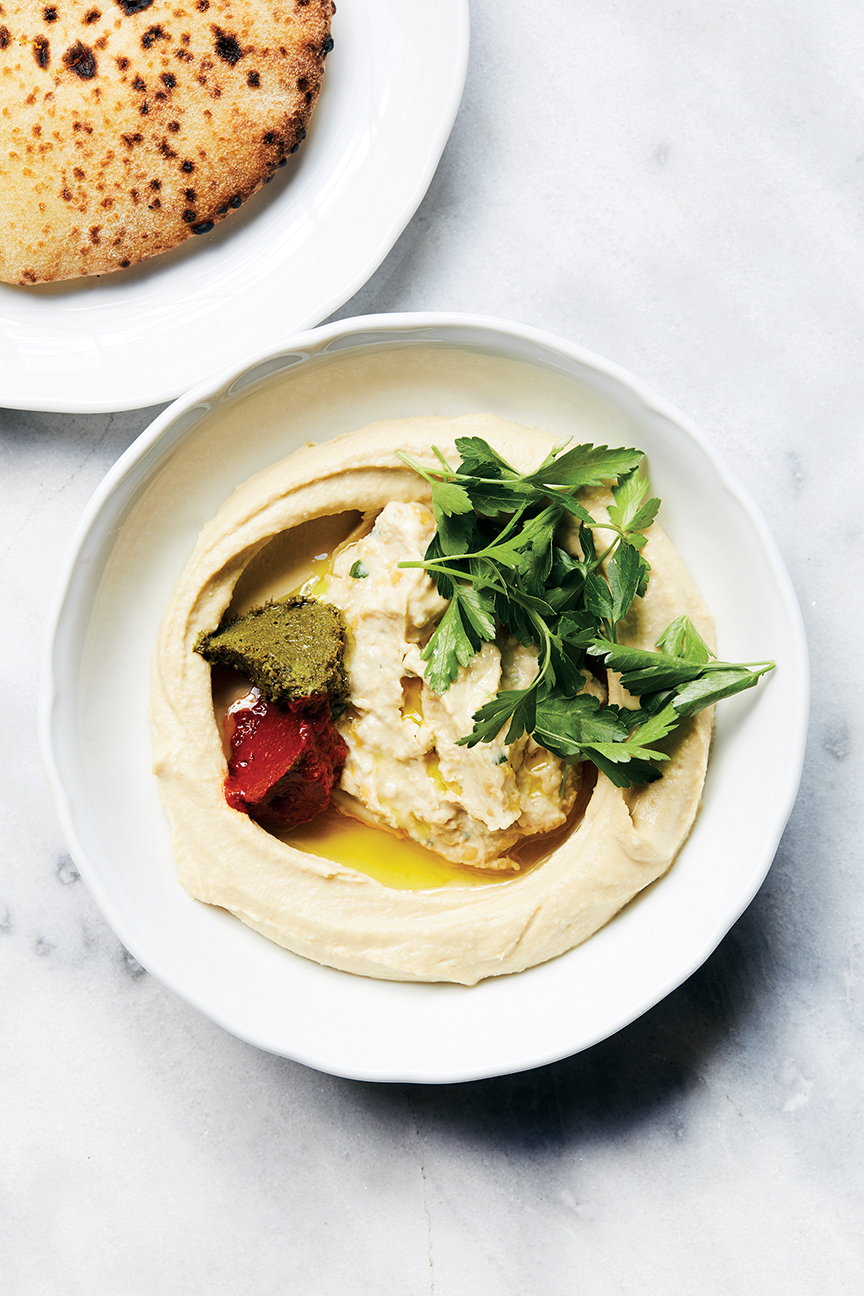
Photo by Nicole Franzen
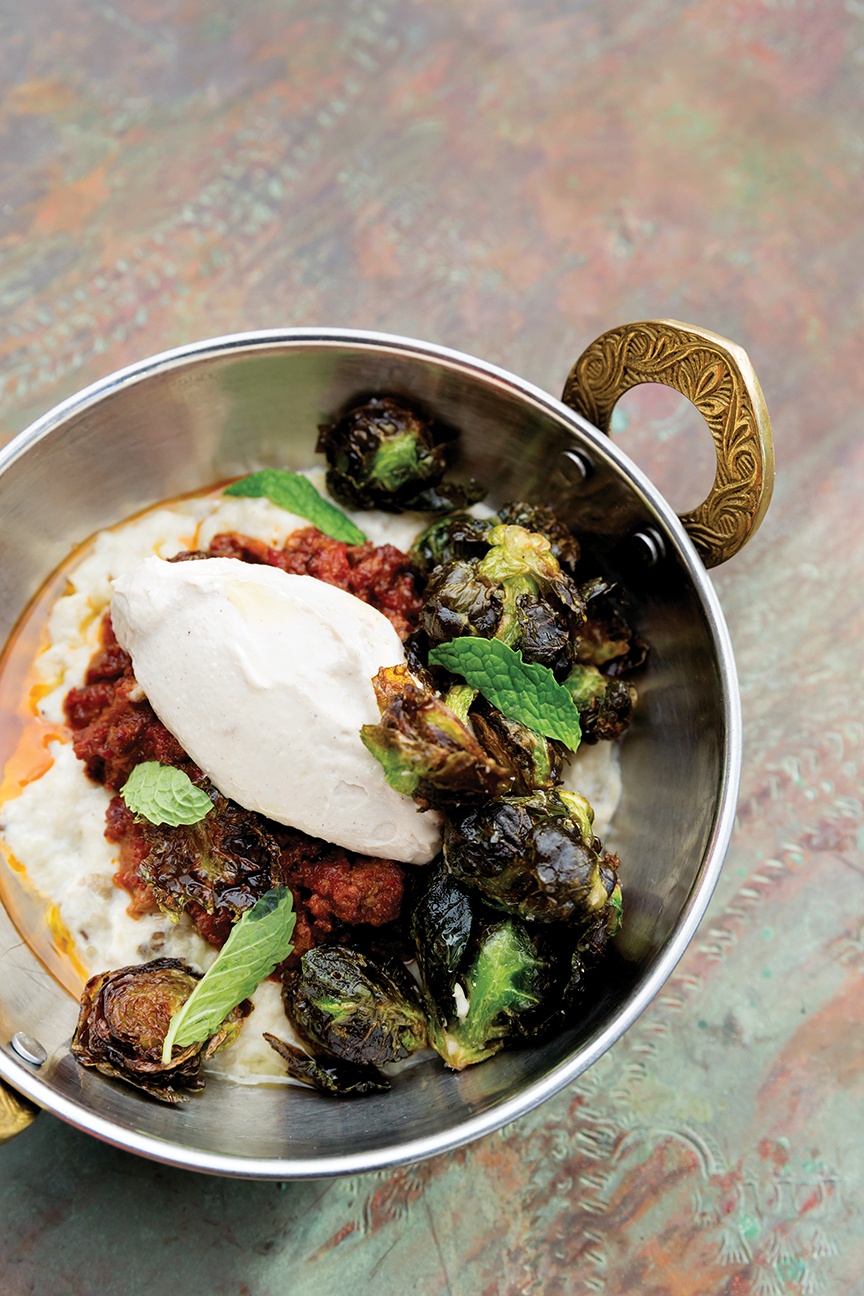
Food Photos by Kristin Teig Photography
Chef Michael Solomonov, a native Israeli who grew up in Pittsburgh, opened Zahav (“gold” in Hebrew) in Philadelphia a decade ago and has won multiple James Beard Awards for his modern Israeli cuisine. Hardly an elitist, the chef/owner is frequently found covered in flour, preparing his legendary laffa bread dough for the restaurant’s wood-burning oven. In his festive, high-ceilinged dining room, traditional lanterns hang over the bar and a photo mural of Jerusalem’s Machane Yehuda Market sets the mood.
Author of Israeli Soul and Zahav: A World of Israeli Cooking (for which he won a couple of those awards), Solomonov is pleased to introduce authentic Israeli cooking to American diners. “Zahav was our way of bringing Israeli hospitality and the soul of Israeli cooking and dining to the U.S.,” says the chef. Solomonov reports that originally the menu was very literal, concentrating on authentic Israeli dishes. “But now we’ve become more comfortable in this conduit role and the relationship that we have for being a culinary tour guide, implying Israeli food without having to copy-and-paste recipes we see over there.”
“We can’t simply call Israeli cooking ‘Middle Eastern,’” insists Solomonov, noting the diverse influences in the country, including about 100 cultures represented by Israeli residents. “We have this convergence of European, Middle Eastern and North African cuisines all happening symbiotically — that’s what makes our food Israeli,” he says.

Photo by Kristin Teig Photography
Hummus with various toppings arrives with Solomonov’s signature laffa, while other mezze include veal carpaccio with coffee-brined egg and preserved lemon, and grilled duck hearts with green garbanzos. Grilled over coals are merguez sausages, harissa-spiked hanger steak or branzino, all elevated versions of traditional dishes from Israel.
The acclaimed chef points to diversity as one of the factors contributing to the current popularity of the region’s cooking, noting that its reliance on vegetables and traditional techniques (e.g. cooking over wood) also appeal to contemporary restaurant-goers. “Diners are always looking for something new, and since there’s so much history and soul in this cuisine, I think it relates to American cooking more than people realize,” says Solomonov.
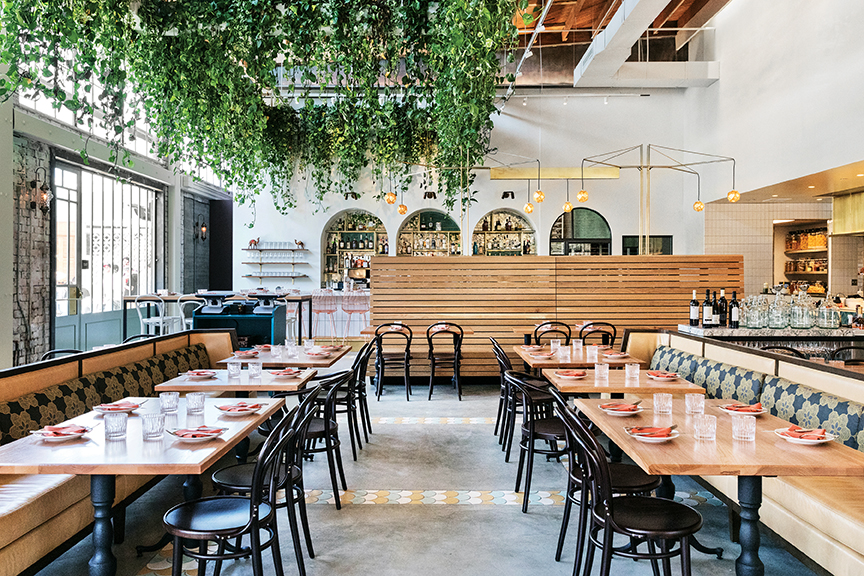
Photo by Dylan + Jeni
Bavel Los Angeles
In the Arts District in downtown Los Angeles, where crumbling factories are being transformed into chic art galleries, boutiques and bistros, young chef Ori Menashe and wife Genevieve Gergis have become prominent restaurateurs. Their first establishment, Italian-inspired Bestia, gave the Arts District culinary cred back in 2012, and this year they followed it up with Bavel, a contemporary Middle Eastern eatery.
Menashe was born in L.A., but raised in Israel, and collectively the couple also has roots in Morocco, Turkey and Egypt, so their menu at Bavel is informed by the entire region. L.A., with its large Persian and Armenian populations, is a city already accustomed to Middle Eastern cuisine, but Bavel satisfies a pent-up demand for a more sophisticated, contemporary experience. Dishes such as velvety foie gras halva, lamb tartare and grilled dorade with red charmoula delight diners.
“We always wanted to open a restaurant that showcases cuisine from our family lineage with flavors and spices we grew up with,” explains Gergis, who also serves as Bavel’s pastry chef. The couple does not believe in being limited by expectations of authenticity and is more concerned about allowing high quality ingredients to take center stage. “Everyone is always searching for authenticity, but every day in this world people are creating beautiful new works of art and delicious things to eat while only being authentic to themselves,” explains Menashe.
At Cambridge, Massachusetts’ Oleana, a mile from the Harvard campus, chef/owner Ana Sortun creates a progressive menu inspired by the cuisine of Turkey, which she fell in love with as a young chef. “The food is so rich, but nothing is heavy,” says Sortun, explaining the sophisticated use of spices in Turkish cooking is distinct from any other cuisine.
“My mission was to expand people’s perception of the Mediterranean and bring Middle Eastern cuisine into the mainstream,” says the classically trained Sortun, whose heritage is actually Norwegian. She suggests that increased travel to the region, health-consciousness and advocacy from chefs like Zahav’s Michael Solomonov are contributing to unprecedented popularity of the region’s cooking.
“I try to introduce my customers to authentic flavors, not necessarily the kind of authentic dishes I would cook if I was a native of Turkey,” says Sortun, who admits a penchant for creativity. A meal at Oleana might begin with mezze such as spinach falafel, quail kabab with a baharat spice blend, or Mediterranean deviled eggs. Larger plates include za’atar-spiced chicken with a Turkish cheese pancake or striped bass with pistachio muhammara, followed by desserts like a Turkish rendition of profiteroles.
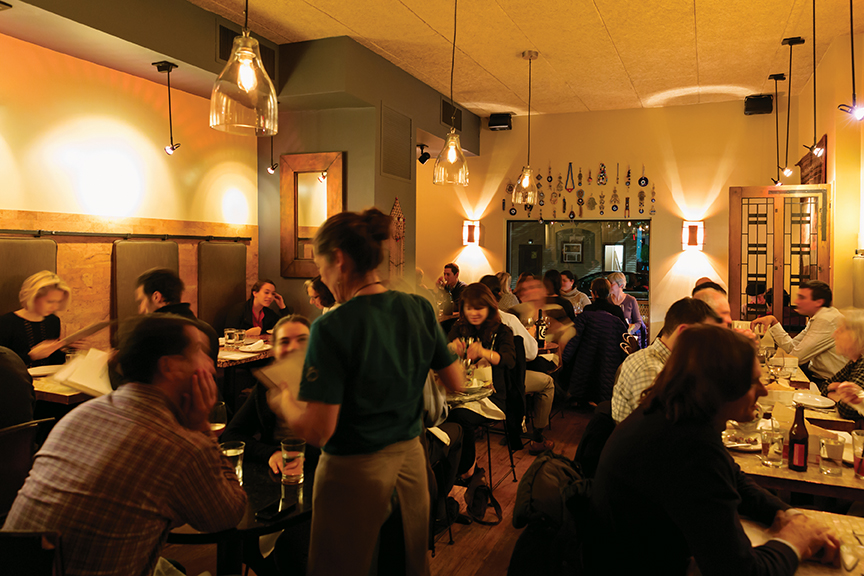
Photo by Kristin Teig Photography.
Oleana Cambridge, Massachusetts
Sortun also co-owns a casual bakery and mezze bar in Cambridge called Sofra, and Sarma in nearby Somerville where former Oleana chef Cassie Piuma presents Middle Eastern exoticism disguised as familiar American comfort foods. “We wanted Sarma to be young and accessible, with small plates and a big bar,” says Sortun, who adds, “It’s more playful, less serious than Oleana.”
Snacks at Sarma include Turkish-spiced beef jerky, brisket shawarma served taco-style, pork belly biscuit sliders layered with jalapeño-whipped feta, and a Middle Eastern riff on the iconic Philly cheesesteak. “Cassie is using language to make the cuisine at Sarma more accessible,” says Sortun, noting that expressing familiar concepts builds trust with diners.
New Orleans hardly seems the place to find exceptional Middle Eastern cuisine, but Big Easy diners are happy to take a break from gumbo and étouffée for chef Alon Shaya’s contemporary Israeli cuisine. His restaurant, Saba (“grandfather” in Hebrew), features a homey dining room and a menu that layers modern concepts over ancient traditions from the Middle East.
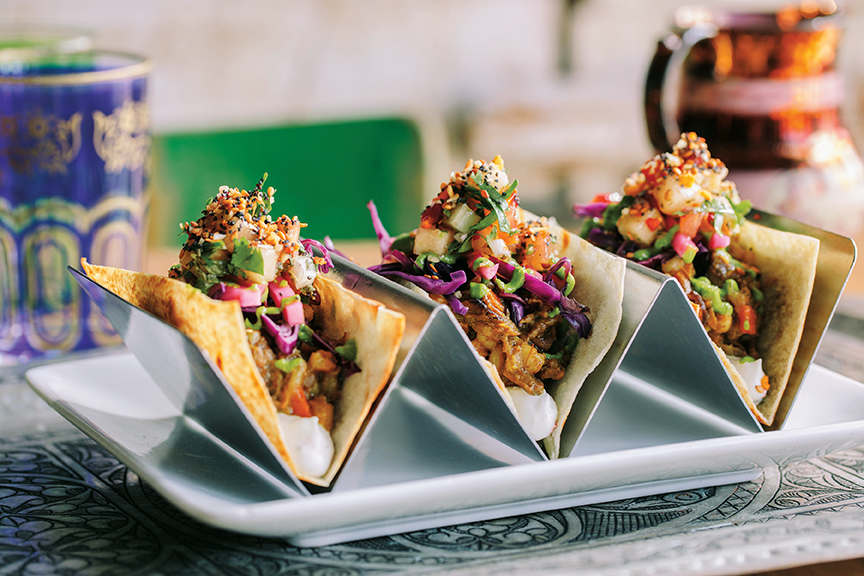
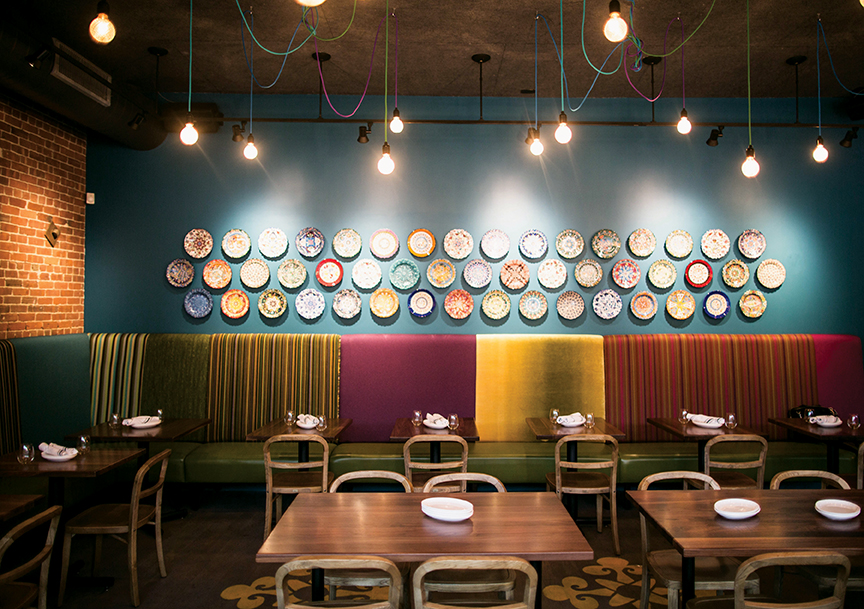
Photo by Susie Cushner.
Sarma Somerville, Massachusetts
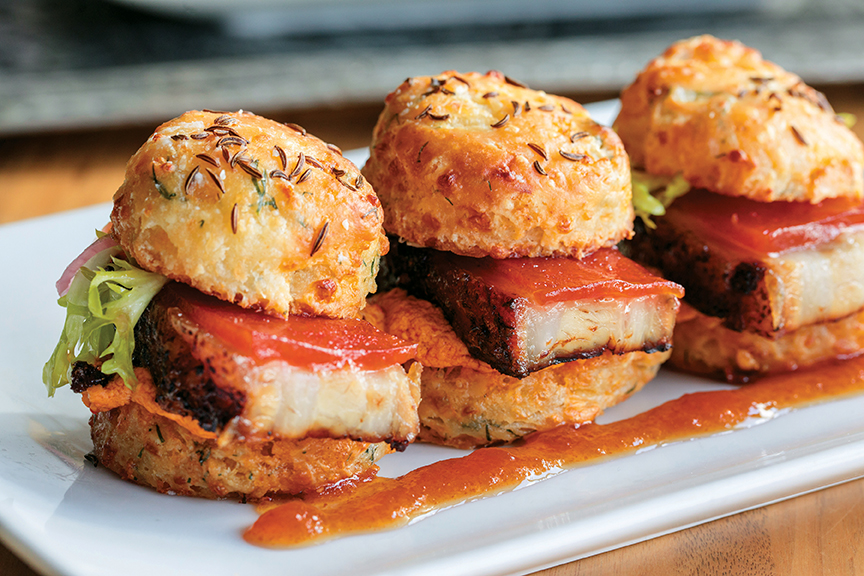
Food Photos by Brian Samuels.
At Saba, Shaya offers a selection of hummus preparations incorporating everything from spicy Brussels sprouts to blue crab, while octopus is treated with shawarma spices and foie gras is complemented with date honey and Marcona almonds. Caviar may precede family-style harissa-roasted chicken or Moroccan-inspired lamb shank pastilla.
“We don’t try to invent anything,” says Shaya, who states the restaurant’s goal is to create food that evokes memories and emotions. Concurring with Philadelphia’s Solomonov, he reports, “Israeli cuisine is different because of the immigration that occurred over the last 70 years,” with cultural influences in Israel, including Russian, Yemenite, Greek, and Moroccan. “It’s how those cuisines intermingle that make it unique,” adds the Israeli-born chef/owner.
Shaya does not necessarily subscribe to the view that Israeli and Middle Eastern cuisines are suddenly trendy. “I think it’s just good, comforting and recognizable food,” he says, adding for emphasis, “I think it’s actually anti-trendy, and that’s why so many people like it.”
Bavel Los Angeles www.baveldtla.com
Saba New Orleans www.eatwithsaba.com
Oleana Cambridge, Massachusetts www.oleanarestaurant.com
Sarma Somerville, Massachusetts www.sarmarestaurant.com
Sofia Bakery & Café Cambridge, Massachusetts www.sofiabakery.com
Zahav Philadelphia www.zahavrestaurant.com
Leading experience agency GR8 hosts the second annual, once-in-a-lifetime culinary experience “Once Upon A Kitchen,” featuring unique creations from the world’s top chefs.
For the first time ever, four culinary masters — Massimo Bottura, Joan Roca, Mauro Colagreco, and Christina Tosi — came together under one roof to curate an exceptional multi-course dinner. Often inspired by the world’s artwork, people and history, each chef showcased original culinary creations on the evening of December 5, at New York City’s Gotham Hall. Unique Homes was honored to attend.
Whether it was the beetroot cooked in salt crust, spin-painted veal, or deconstructed apple pie, those who attended this exclusive gastronomic experience savored inspired dishes while indulging in exclusive wine.
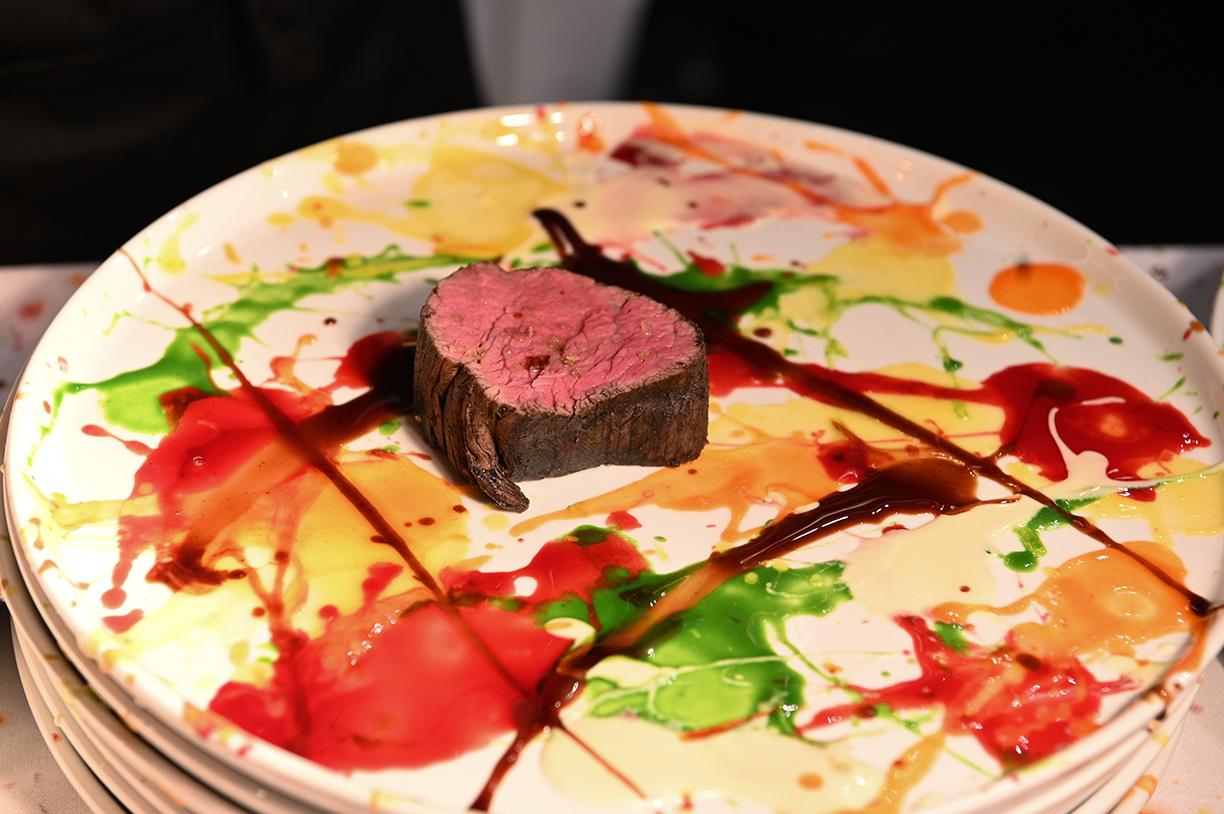
“Psychedelic Spin-Painted Veil” by Massimo Bottura
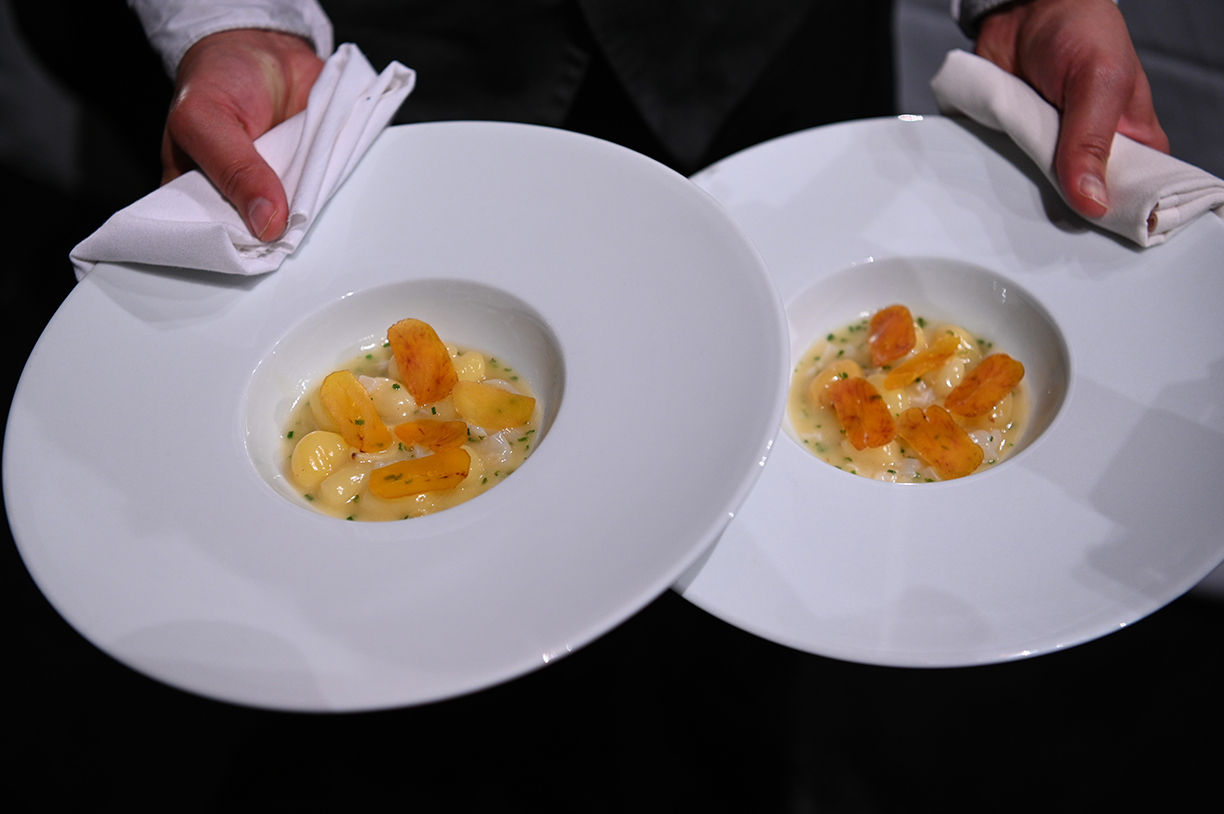
Ragout of Baby Potatoes.
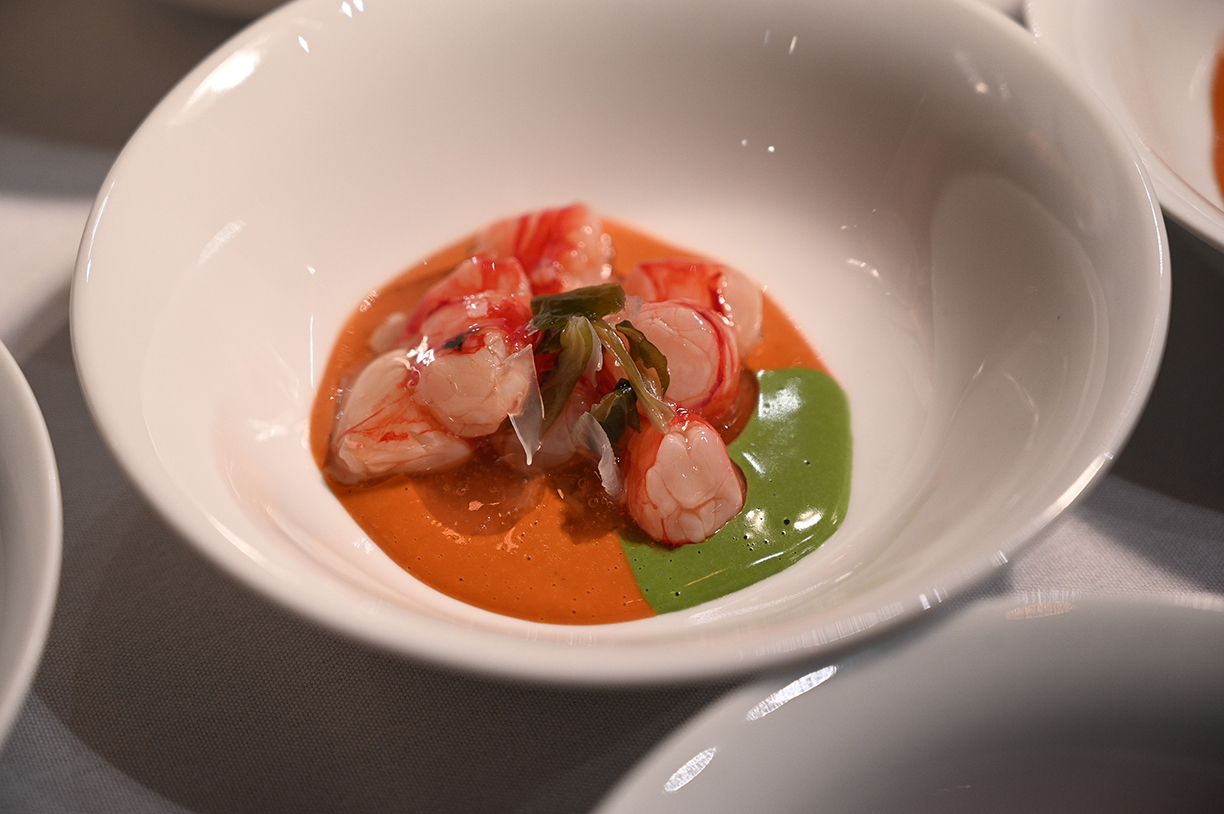
Prawn Marinated with Rice Vinegar
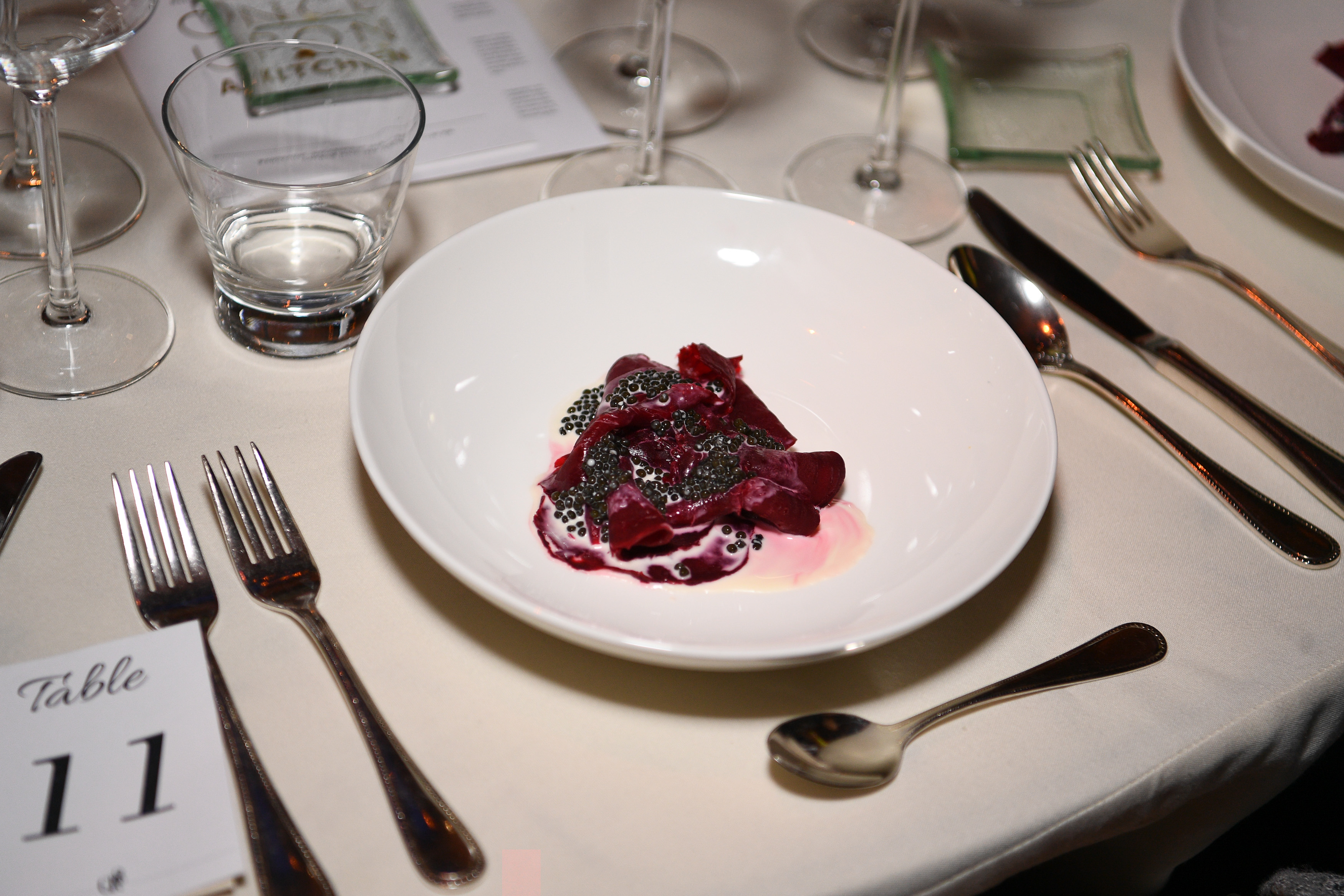
Beetroot Cooked in Salt Crust

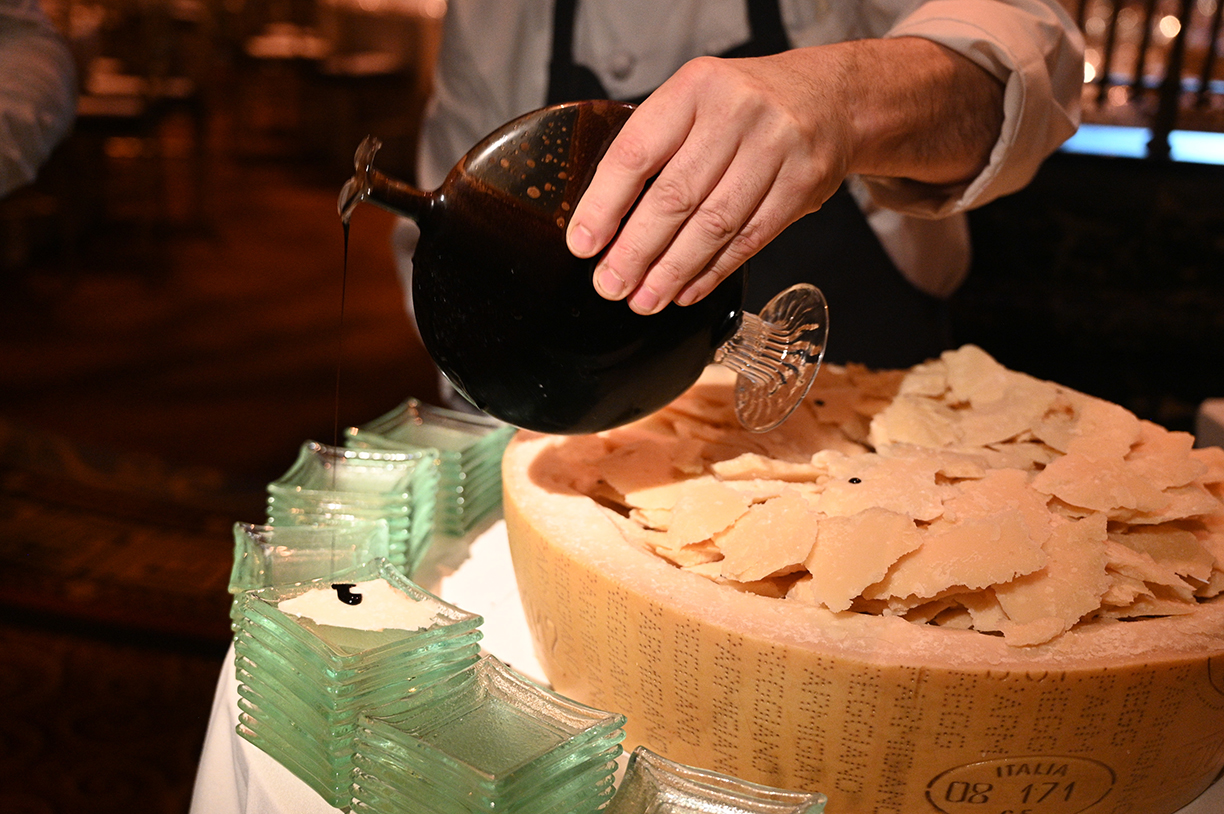
The evening commenced with the Eureka Experience, a private wine tasting with world-renowned winemaker Roberto Cipresso. Attendees were presented with two exquisite wines coinciding with stories from two iconic regions of Italy, Tuscany and Lazio.
Guests were then welcomed to a cocktail reception, which highlighted three unique wines and one signature cocktail paired with hors d’oeuvre creations from each chef.
Massimo Bottura presented a 30-month selection of Parmigiano Reggiano with extra aged balsamic vinegar, along with Mauro Colagreco’s Jerusalem artichoke tartelettes with black trumpets and melanosporum truffle and Joan Roca’s Steamed Truffle Brioche.
Following the hors d’oeuvres, attendees were seated and addressed by CEO of GR8, Barnabas Carrega, and award-winning creator and host of The Sporkful podcast, Dan Pashman.
Pashman was the official host of the evening, presenting the chefs and each of their exclusive dishes. Serenaded by an accompanying pianist, guests watched as the chefs prepared, cooked and plated seven courses in total — each accompanied by a hand-selected wine.
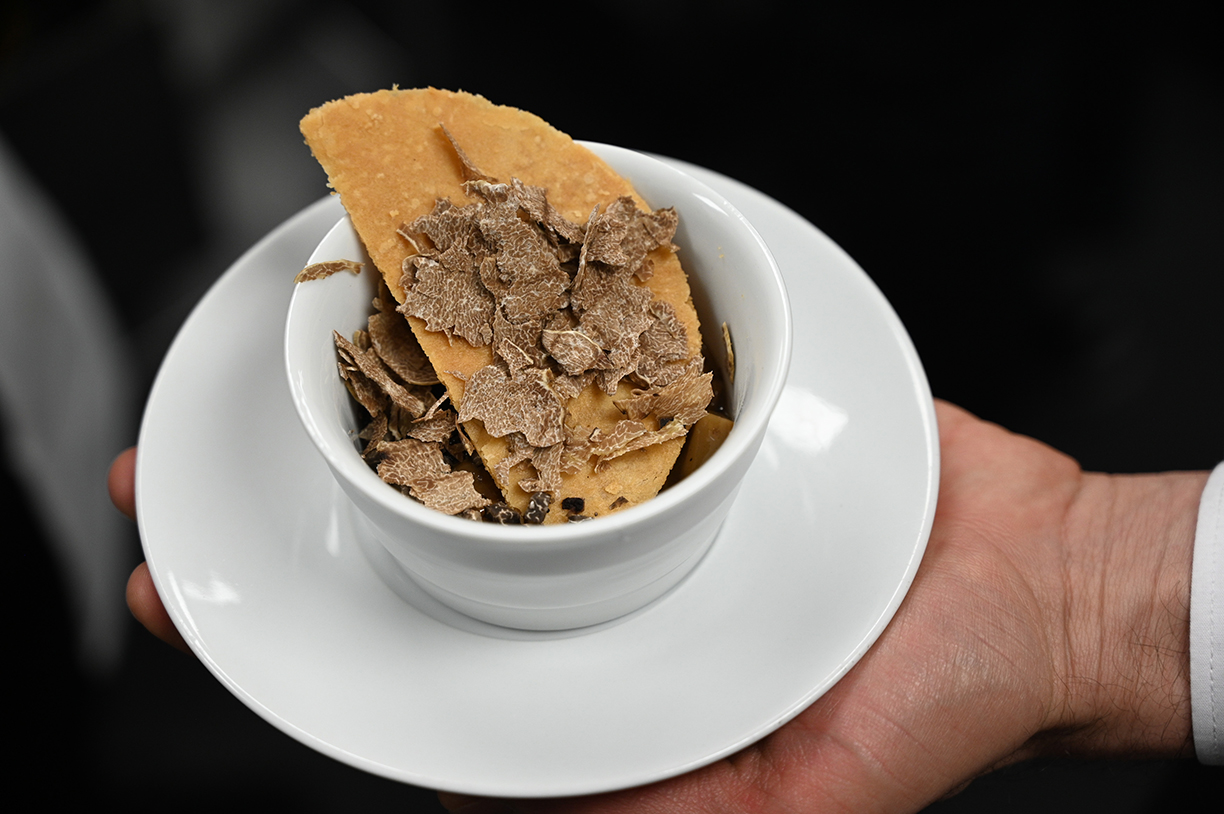
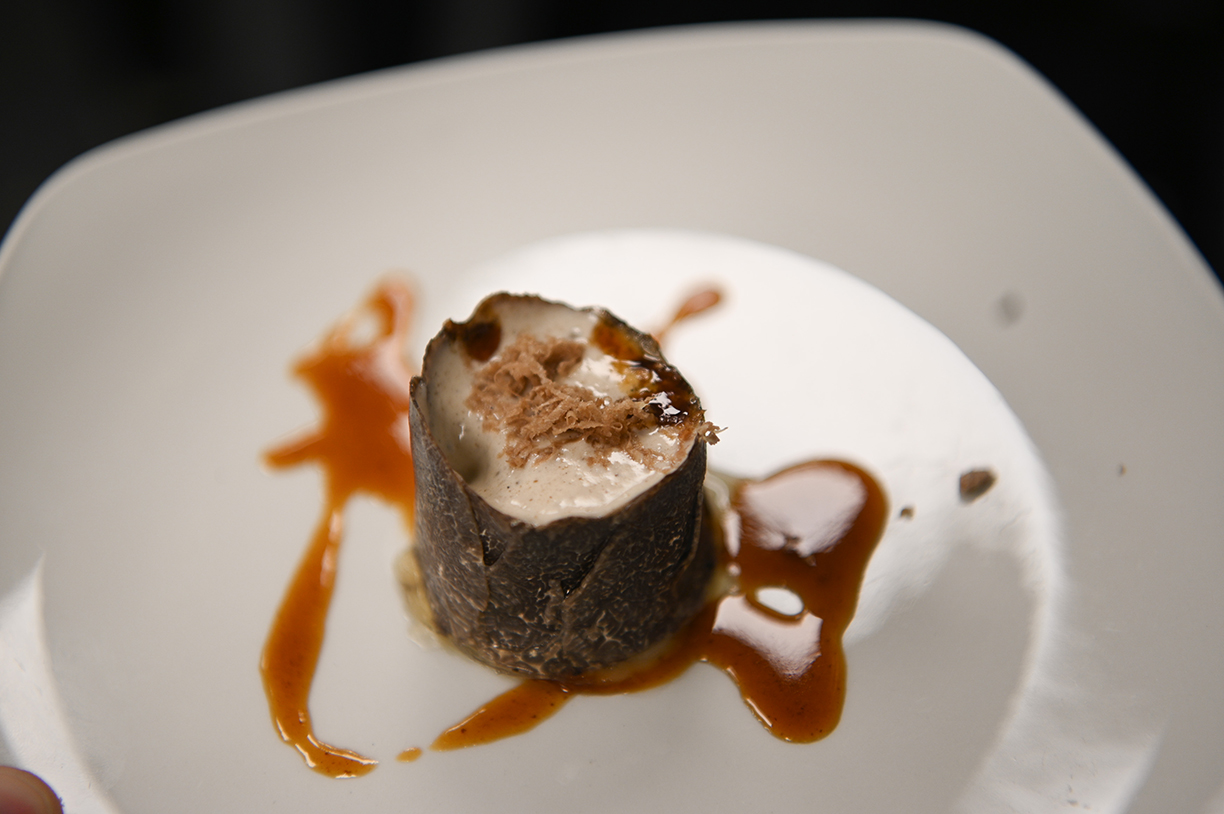
Left: “Never Stop Planting” by Massimo Bottura
Above: Truffle Soufflé with Veal Oyster Blade by Joan Roca
Some culinary highlights of the evening came from Osteria Francescana’s Massimo Bottura who presented a “Never Stop Planting” dish paying tribute to Joseph Beuys’ infamous installation planting oak trees and granite columns throughout far reaching locations.
The dish was a foie gras custard served with seasonal woodland flavors from truffles to mushrooms in a mineral broth. Bottura also presented guests with “Psychedelic Spin-Painted Veil.” The meat was marinated in milk, brushed with vegetable charcoal and dressed with creamy potatoes, puree of orange and yellow peppers, a red beet reduction and extra old Villa Manodori Artigianale balsamic vinegar from Modena.
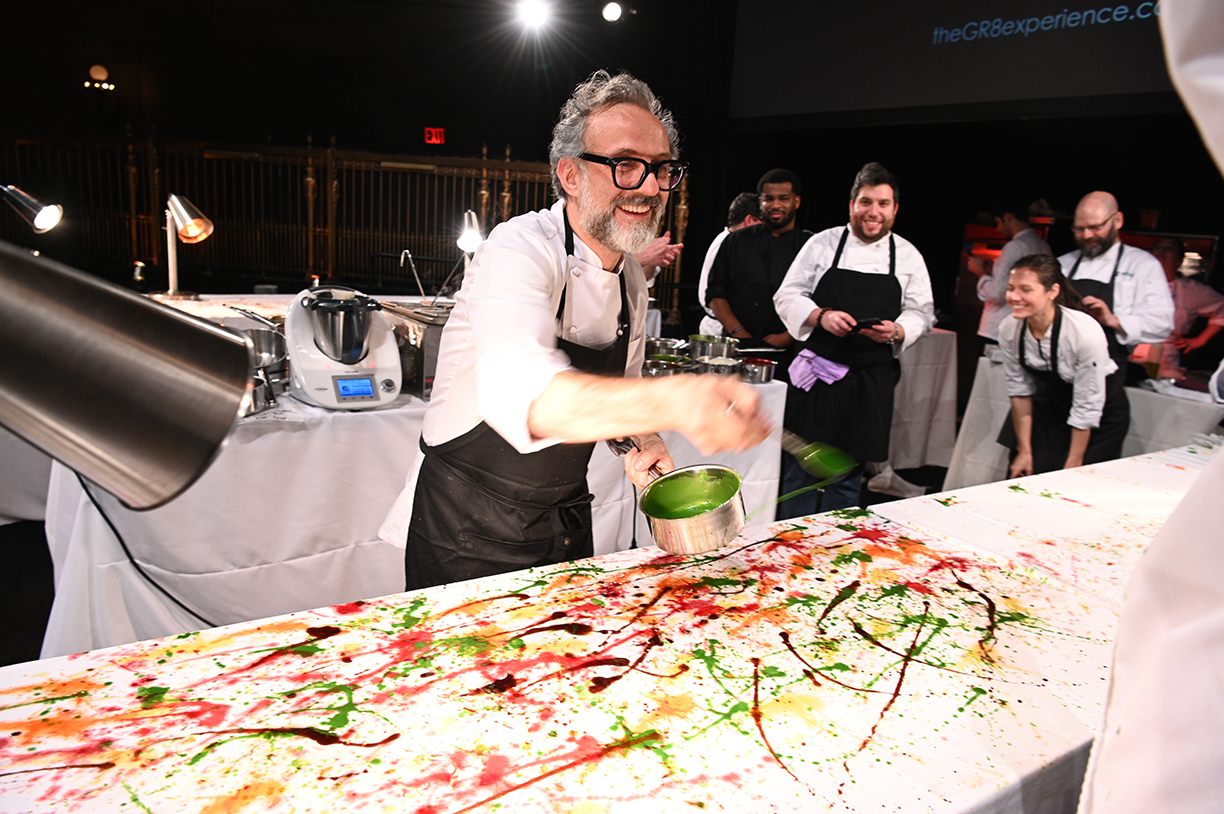
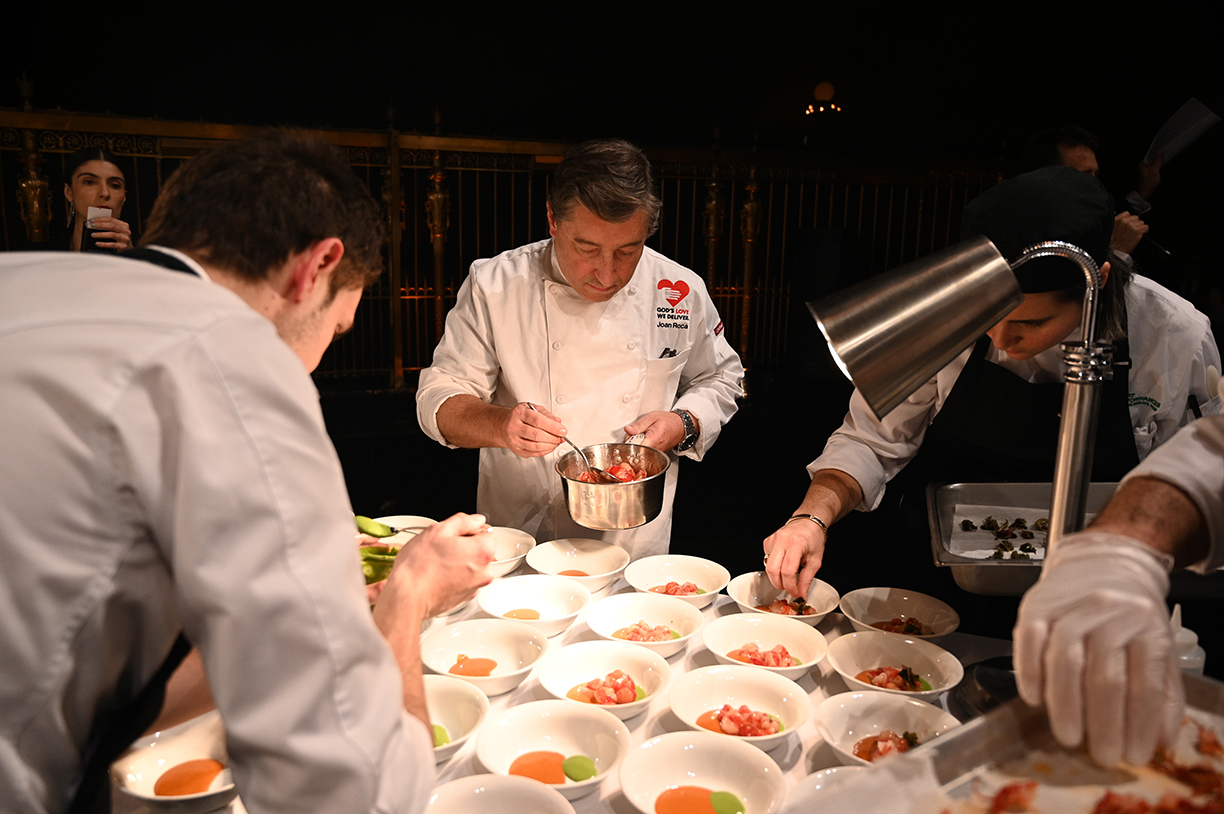
Joan Roca’s exquisite cuisine featured prawn marinated with rice vinegar, drawing inspiration from Salvador Dalí’s “The Persistence of Memory.” Roca also presented a truffle soufflé with veal oyster blade inspired by Gaudi’s modernist architecture and the “Melting Watches” of Dalí’s famous painting, “The Persistence of Time.”

Mauro Colagreco showcased his undeniable talents through a “Crapaudine” Beetroot cooked in salt crust, finished with a “Ossetra” Caviar Sauce inspired by the agricultural knowledge of producer, Annie Bertin from the small town, Vende, in northwestern France.

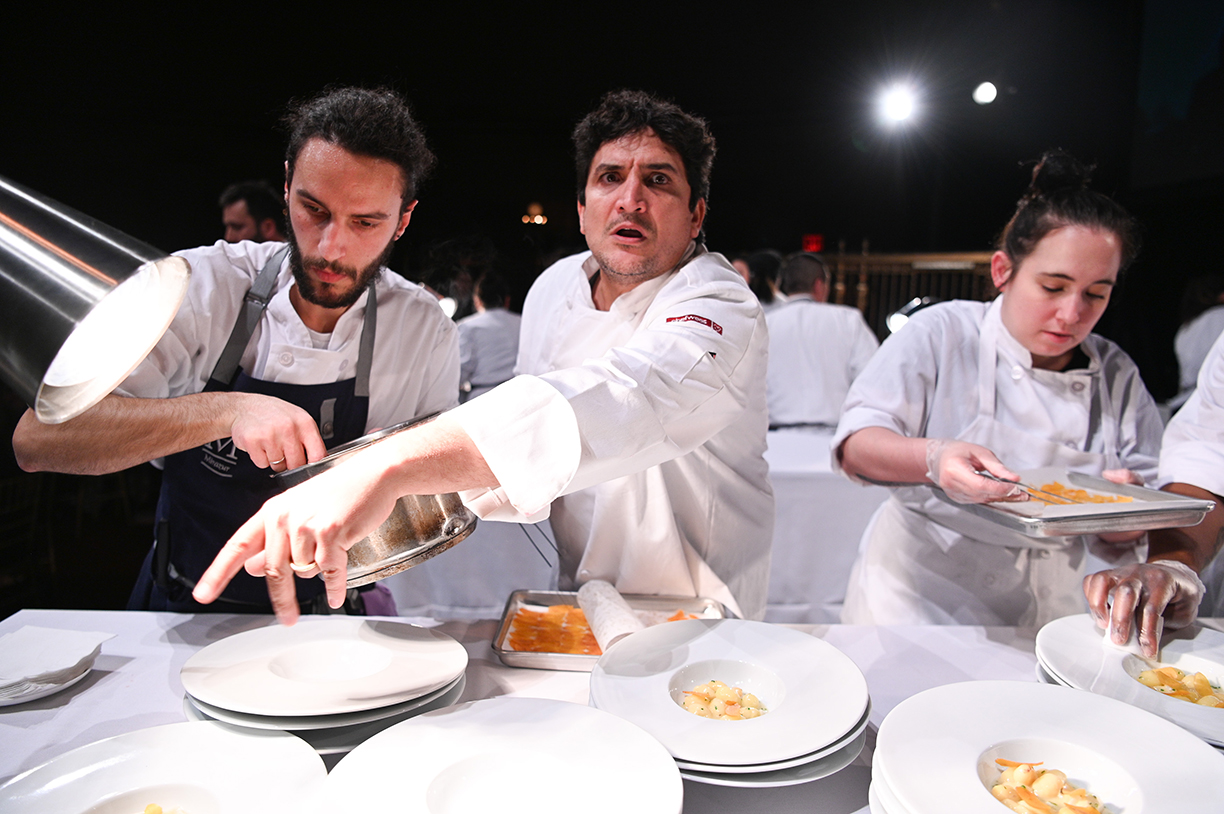
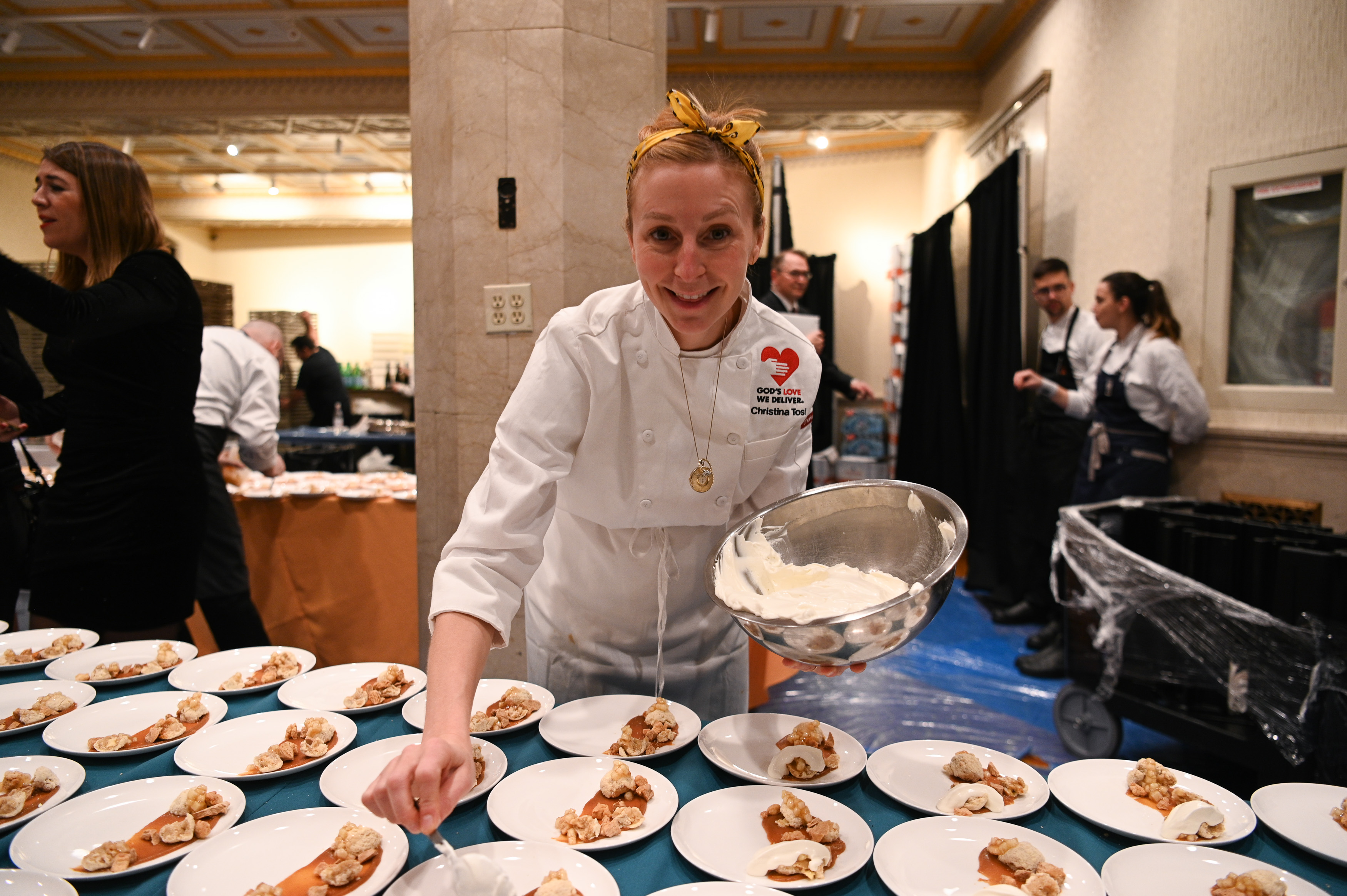
Guests were then treated by the creative mastermind and classically trained pastry chef Christina Tosi, founder and CEO of Milk Bar, whom presented an exclusive “Apple Pie-ish” dessert topped with a miso butterscotch, brown butter and sour whipped cream.
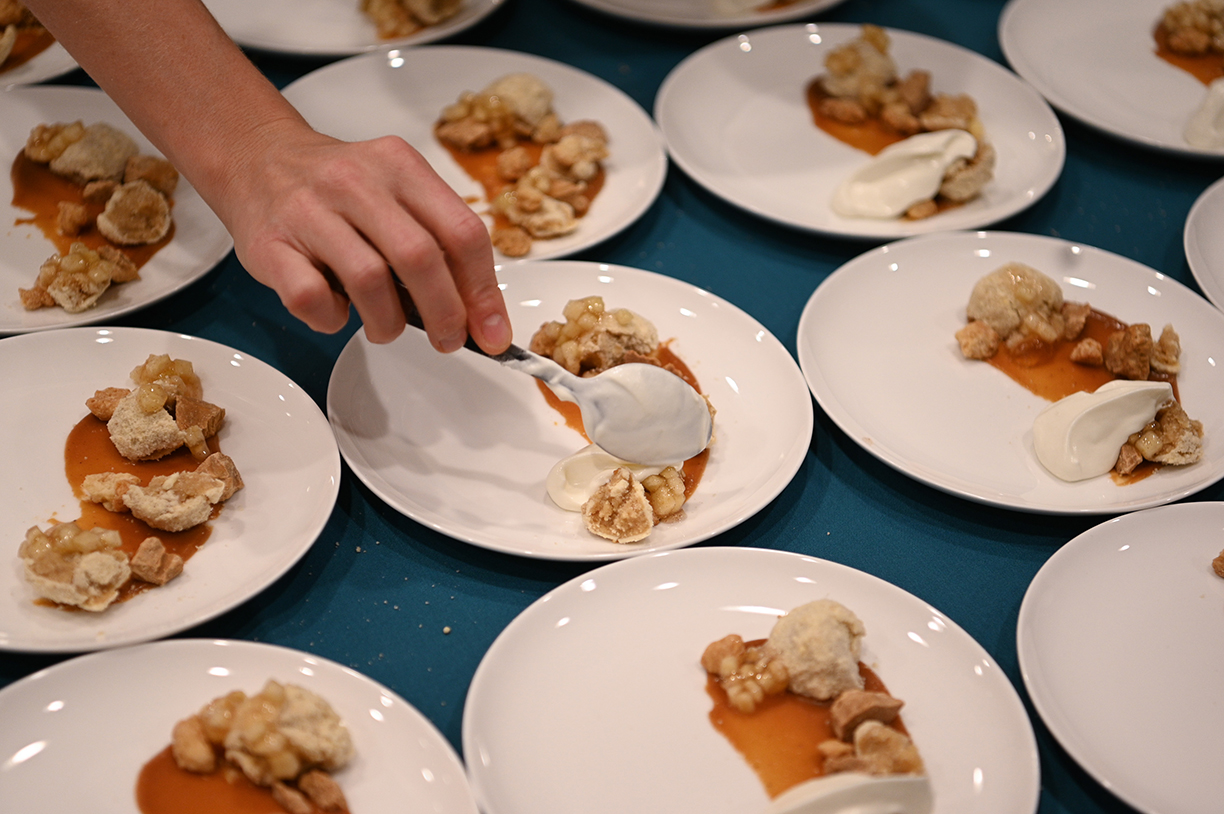
Following the gastronomic cuisine, all four chefs came to the stage for a final conversation with Dan Pashman discussing their dishes from the evening and the inspirations that created them.
The evening’s beneficiary was God’s Love We Deliver, the leading provider of nutritious and personalized meals to individuals who are too ill to shop and cook for themselves. God’s Love We Deliver creates and provides over 7,000 meals each weekday, delivering them to those with life-altering illnesses across all five New York City boroughs, Westchester and Nassau Counties, and Hudson County, New Jersey.















